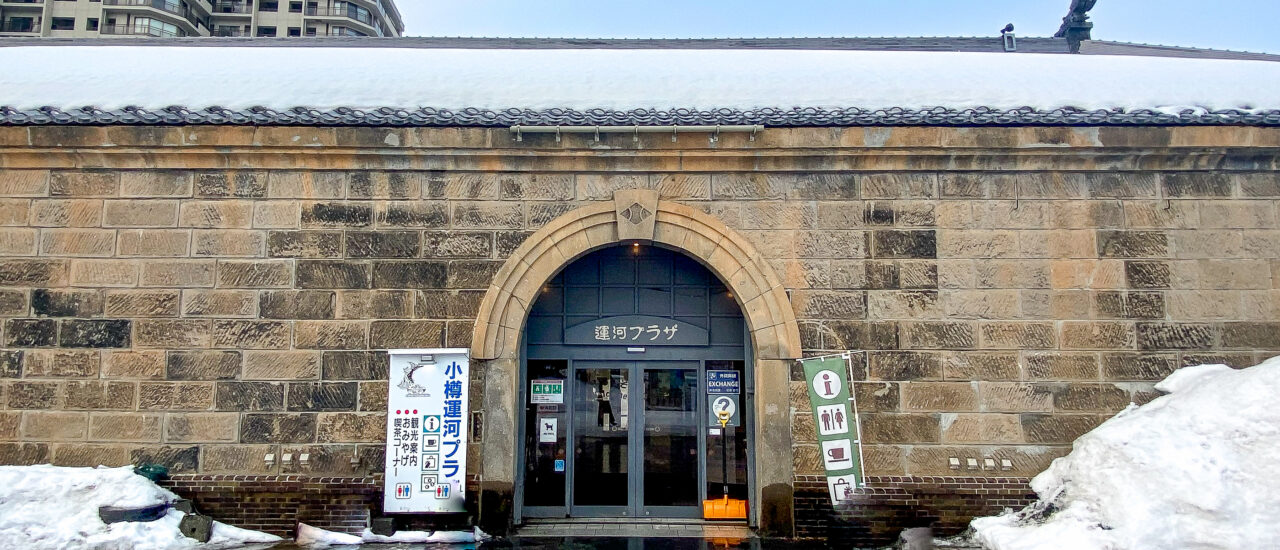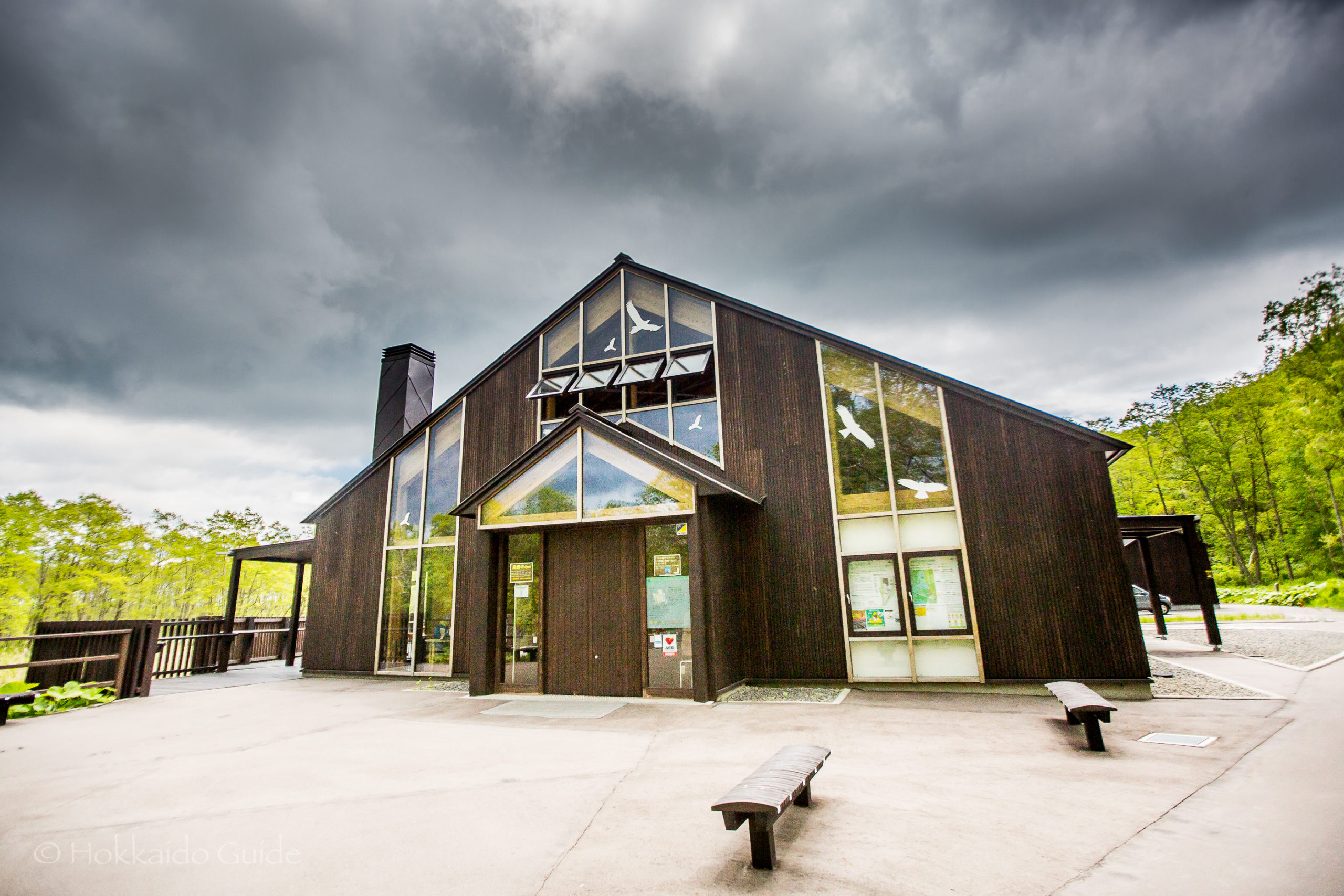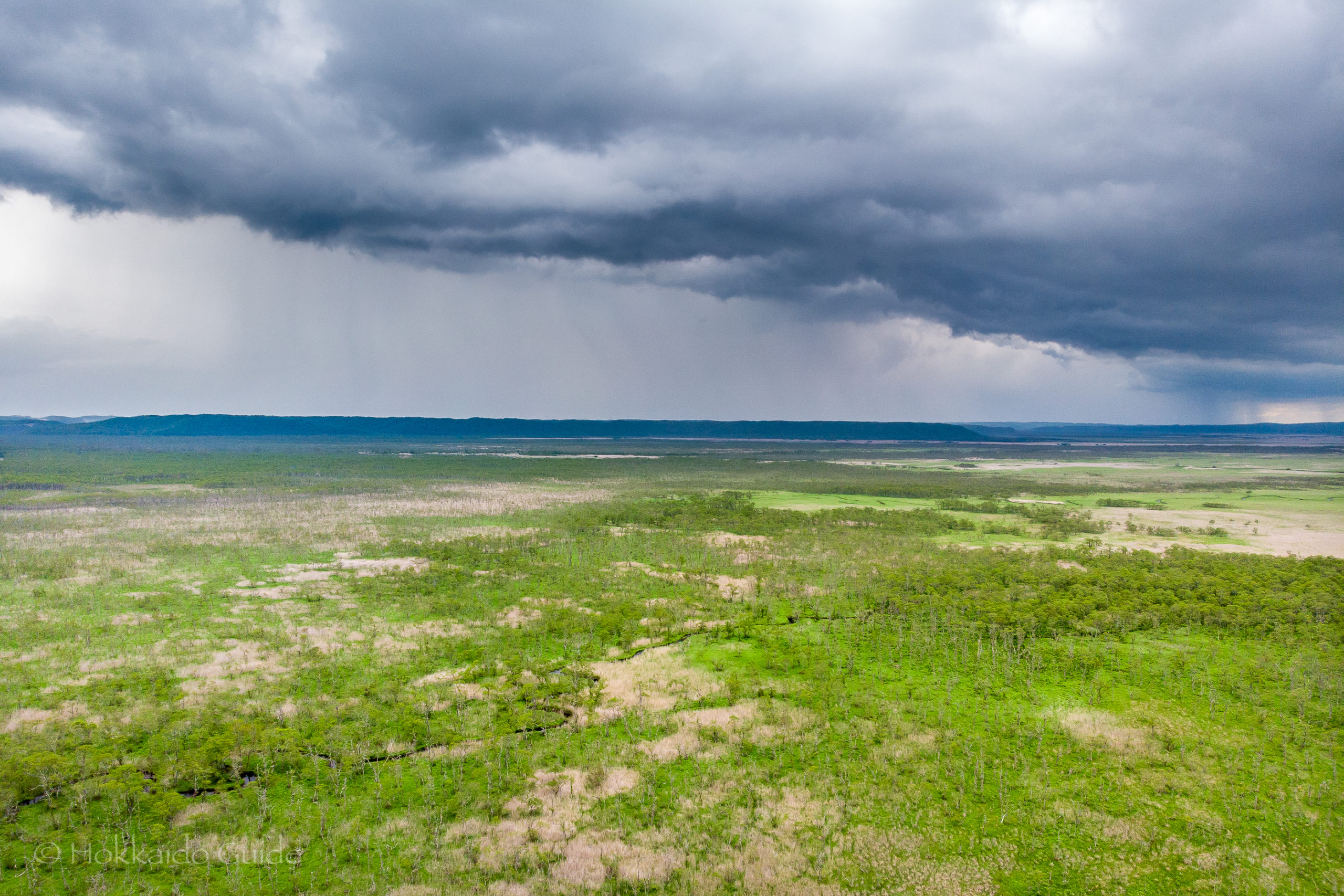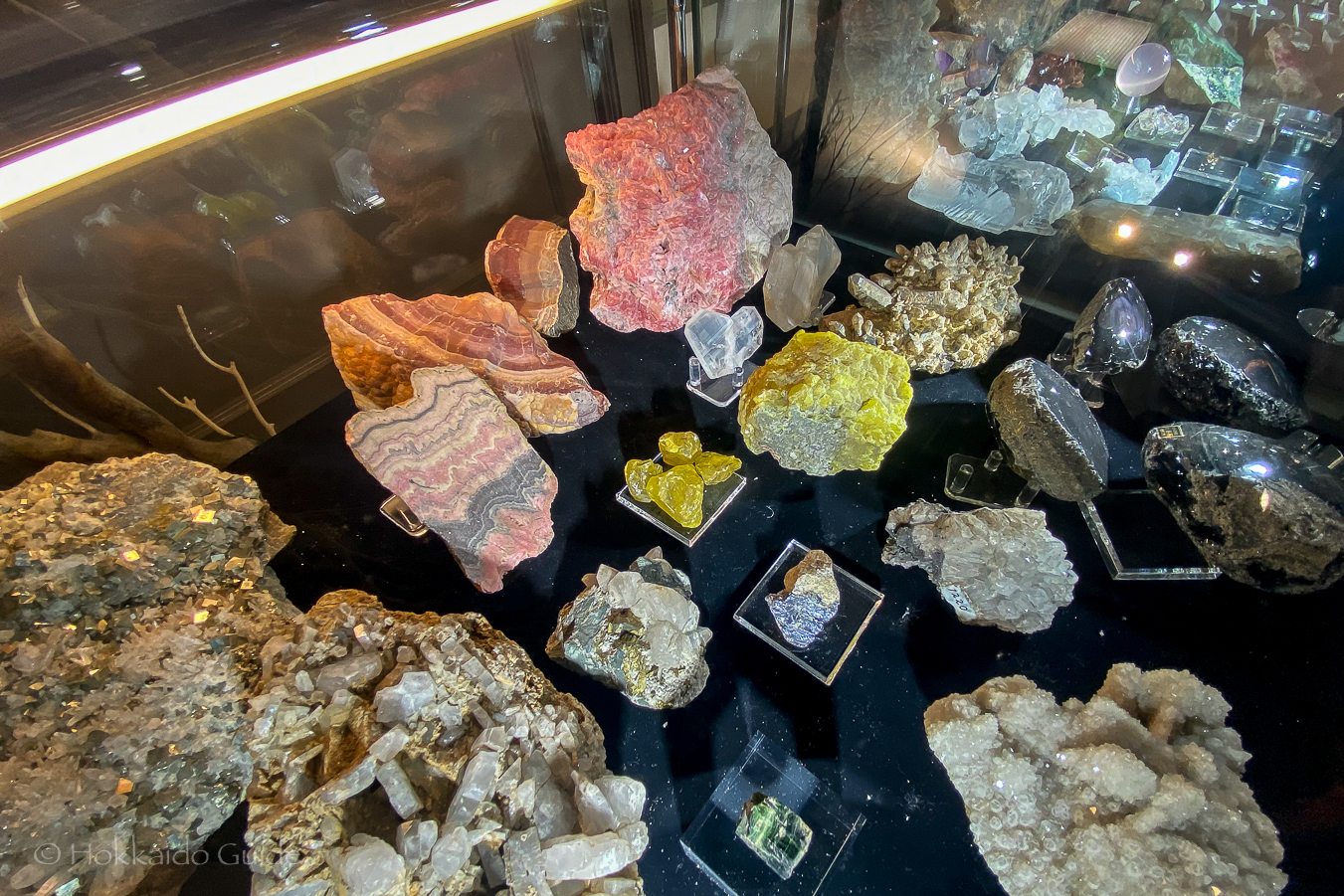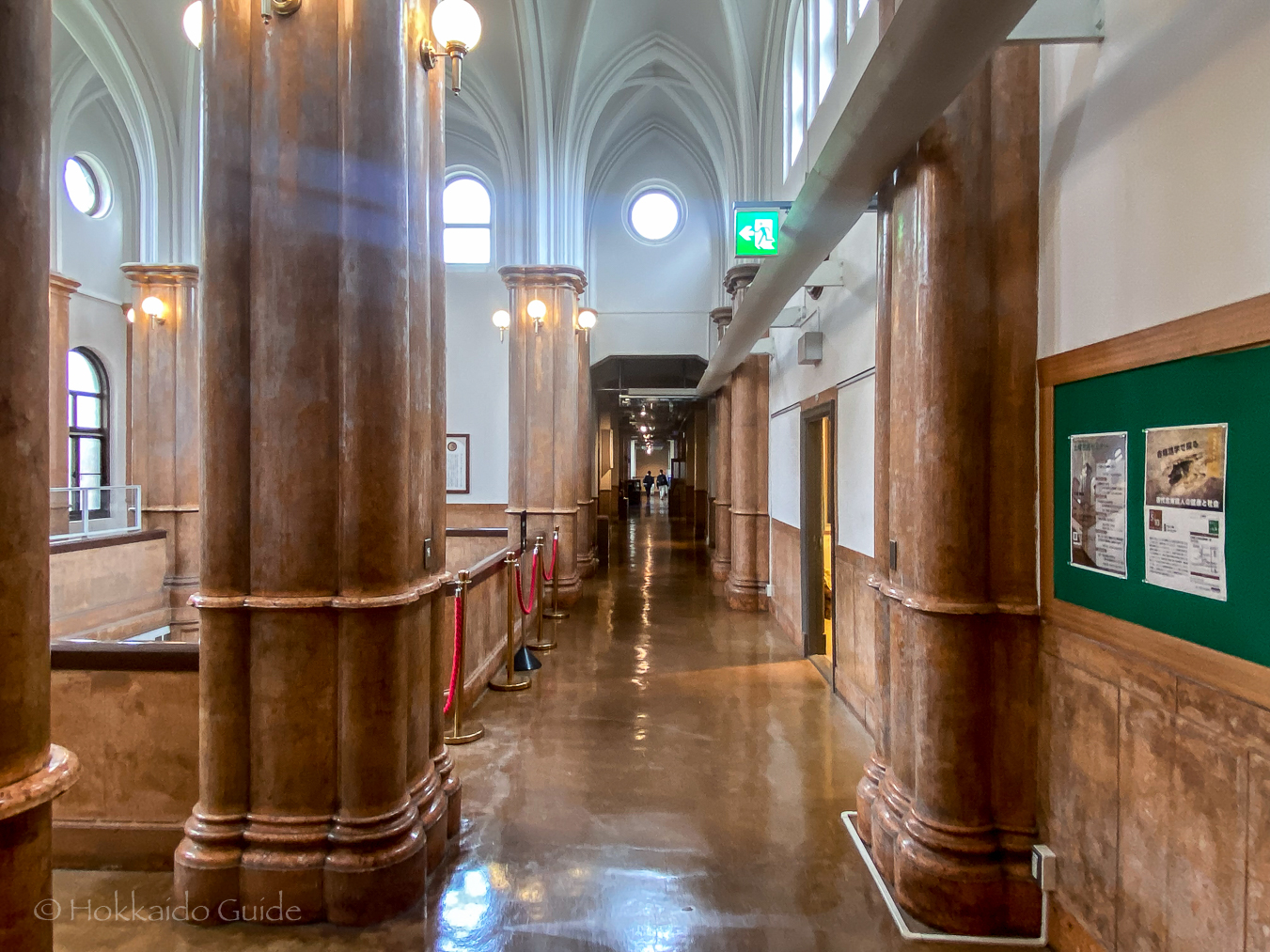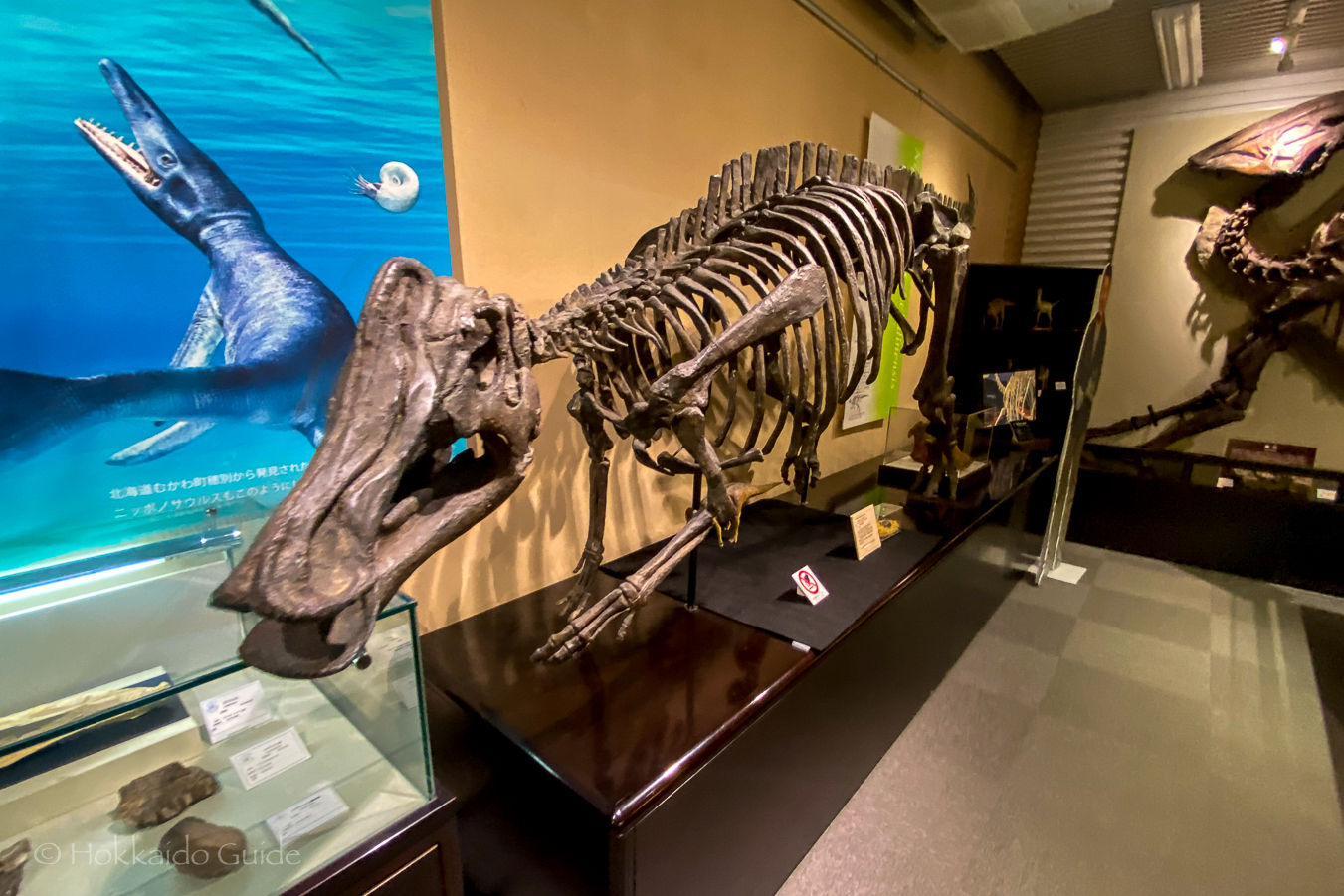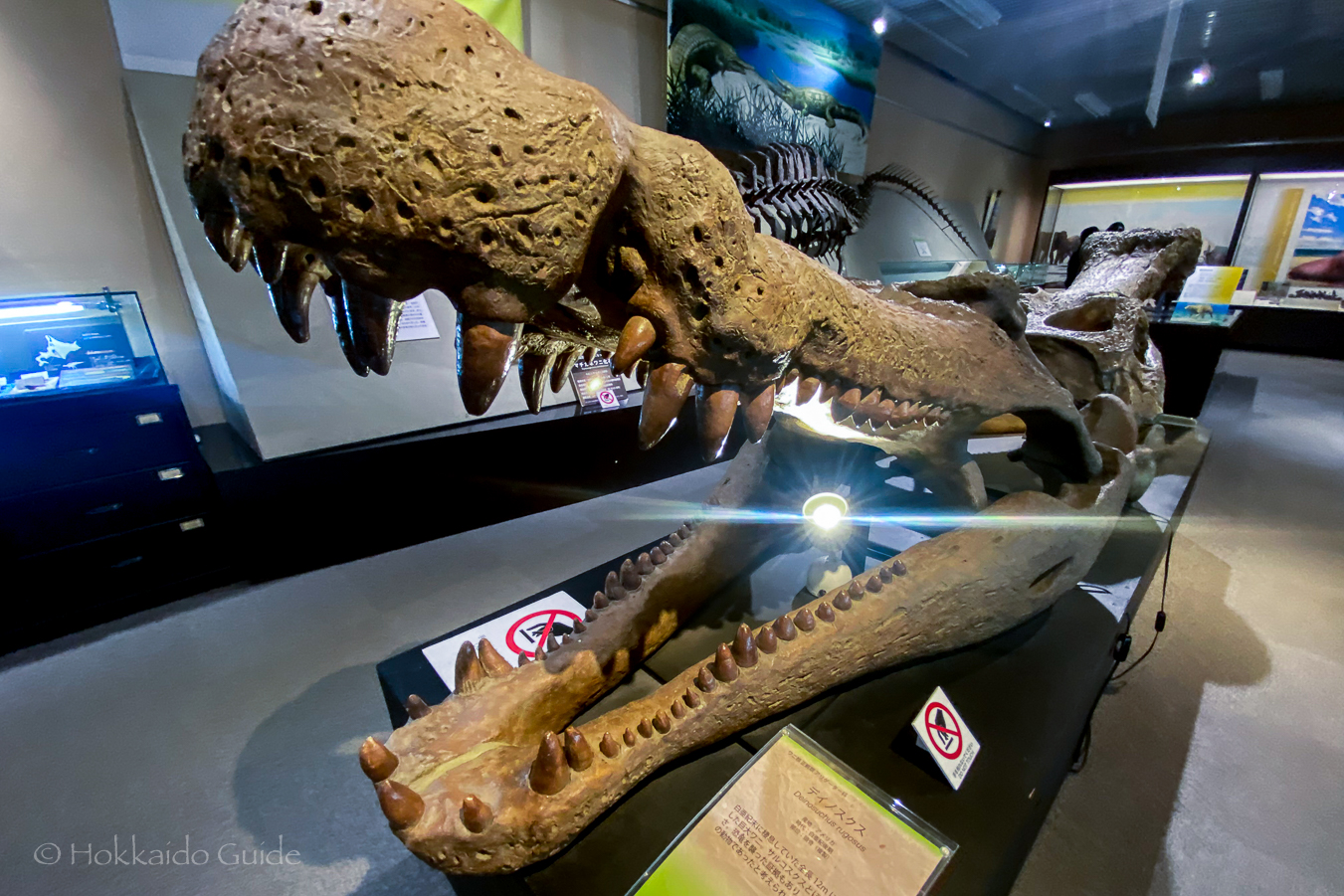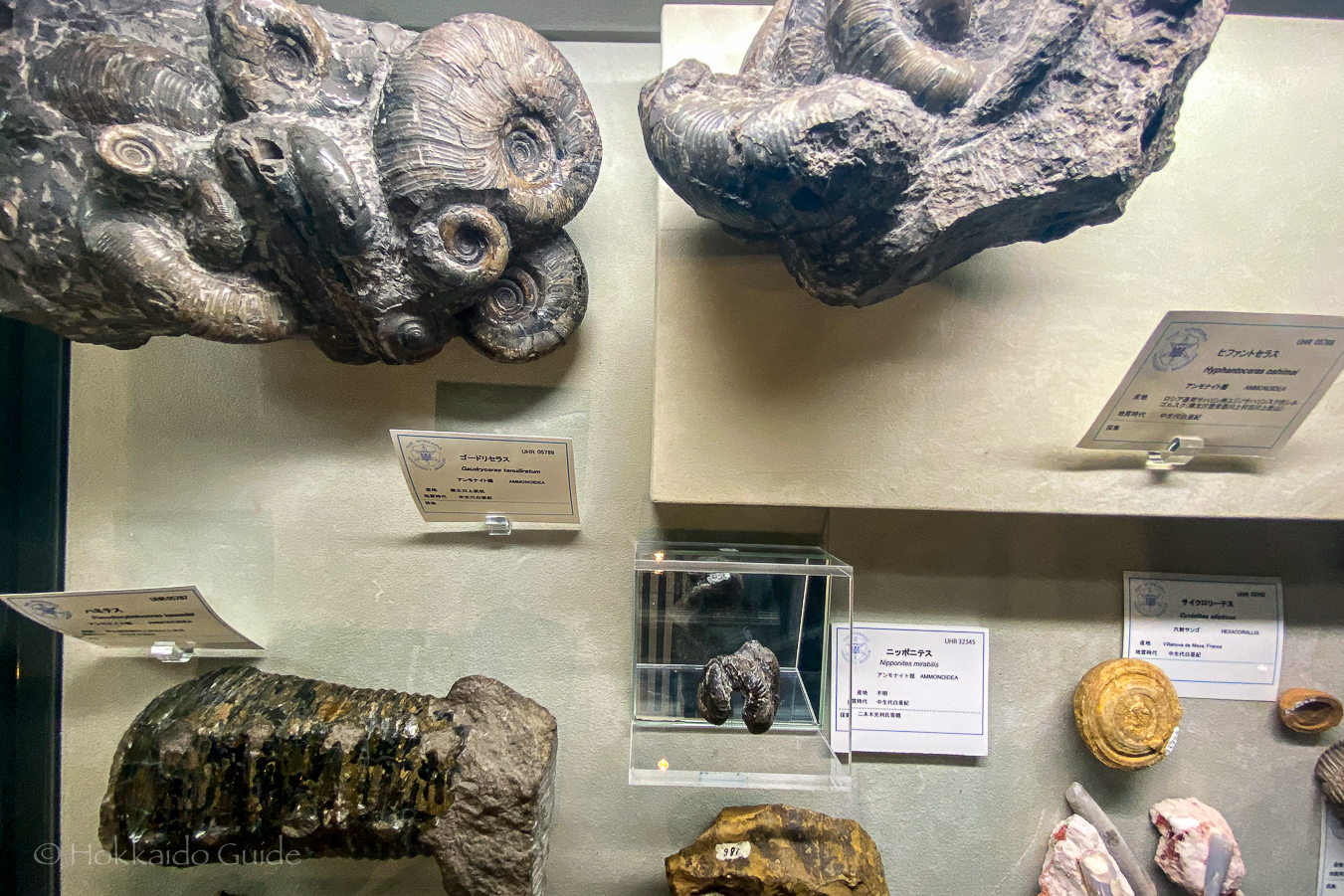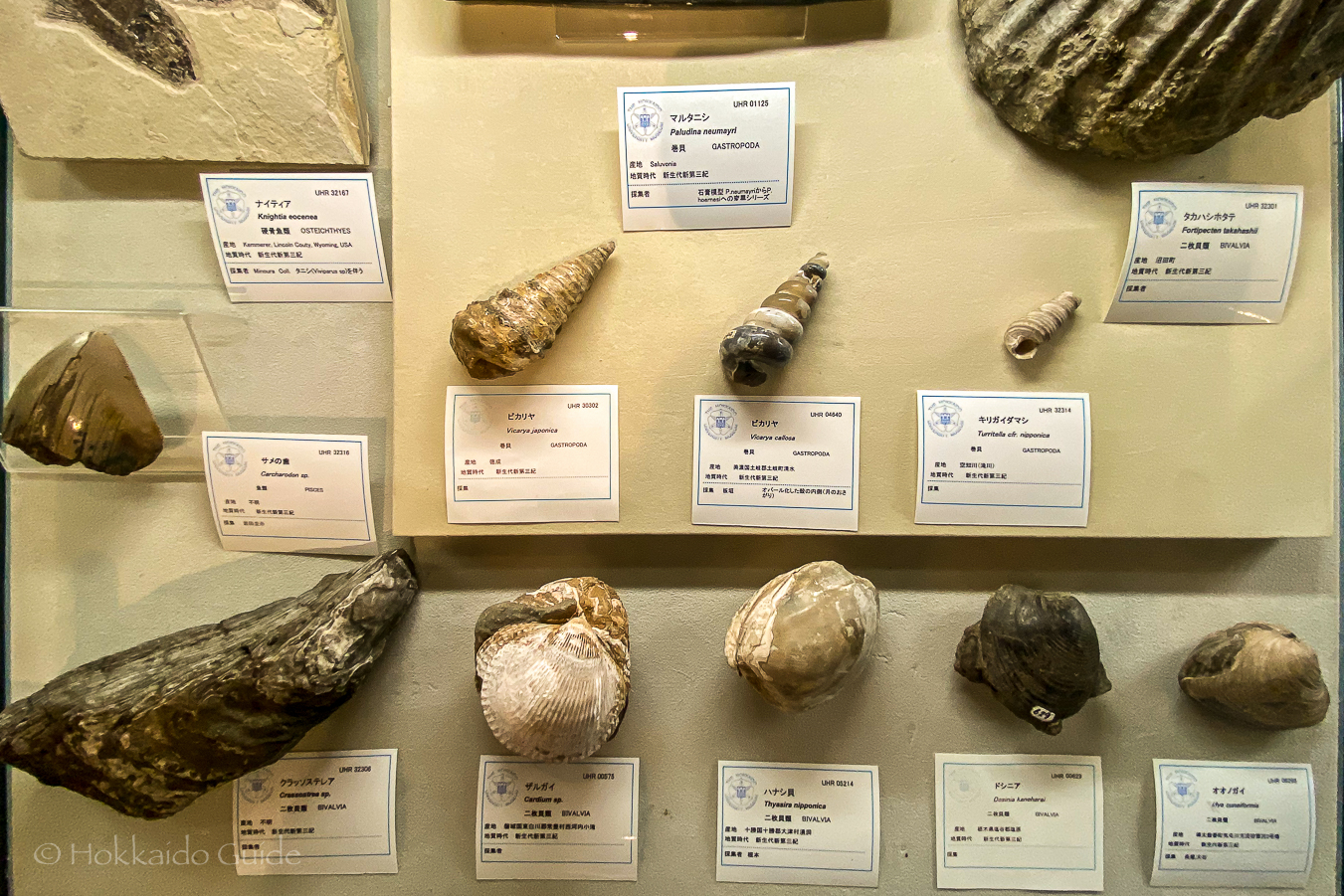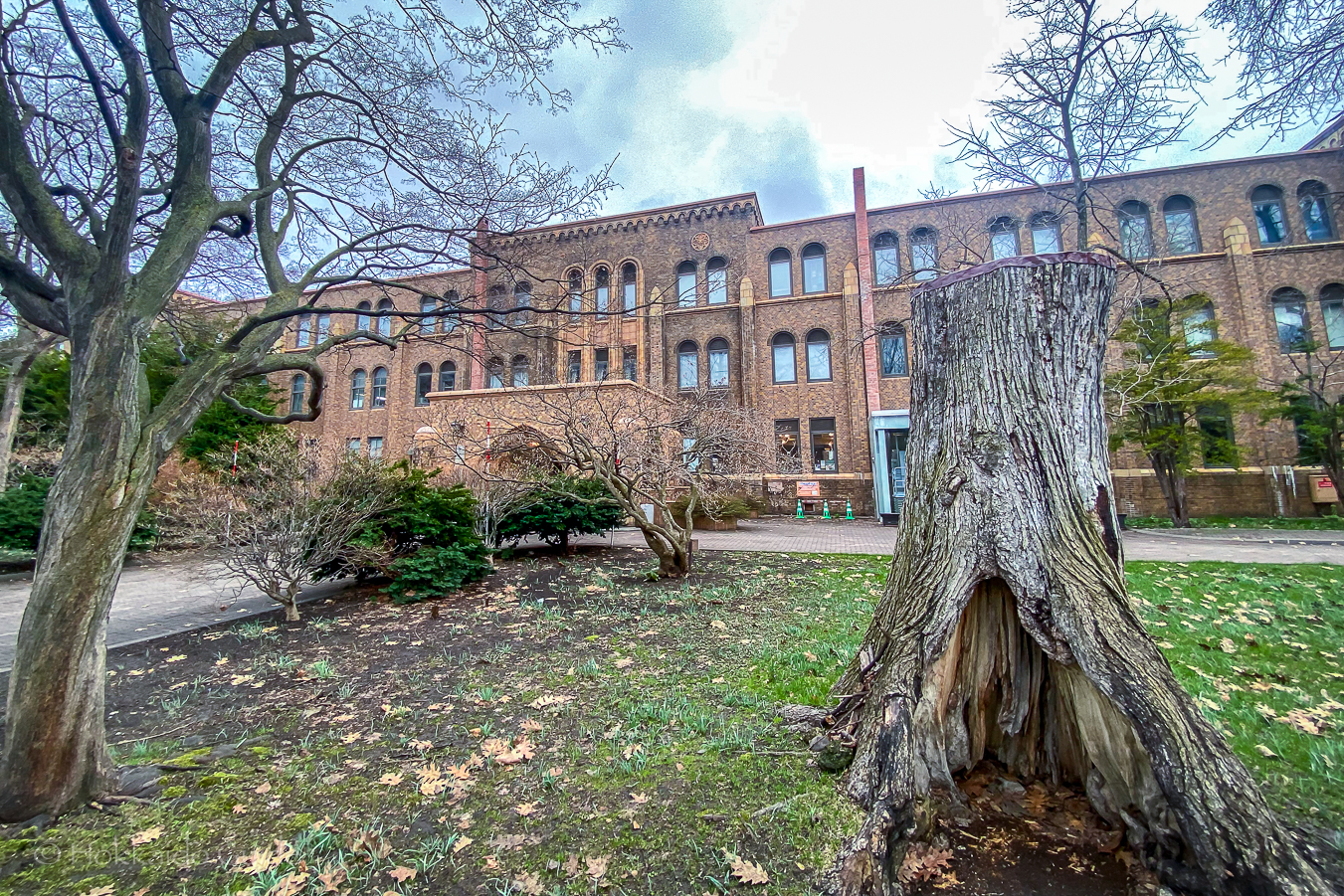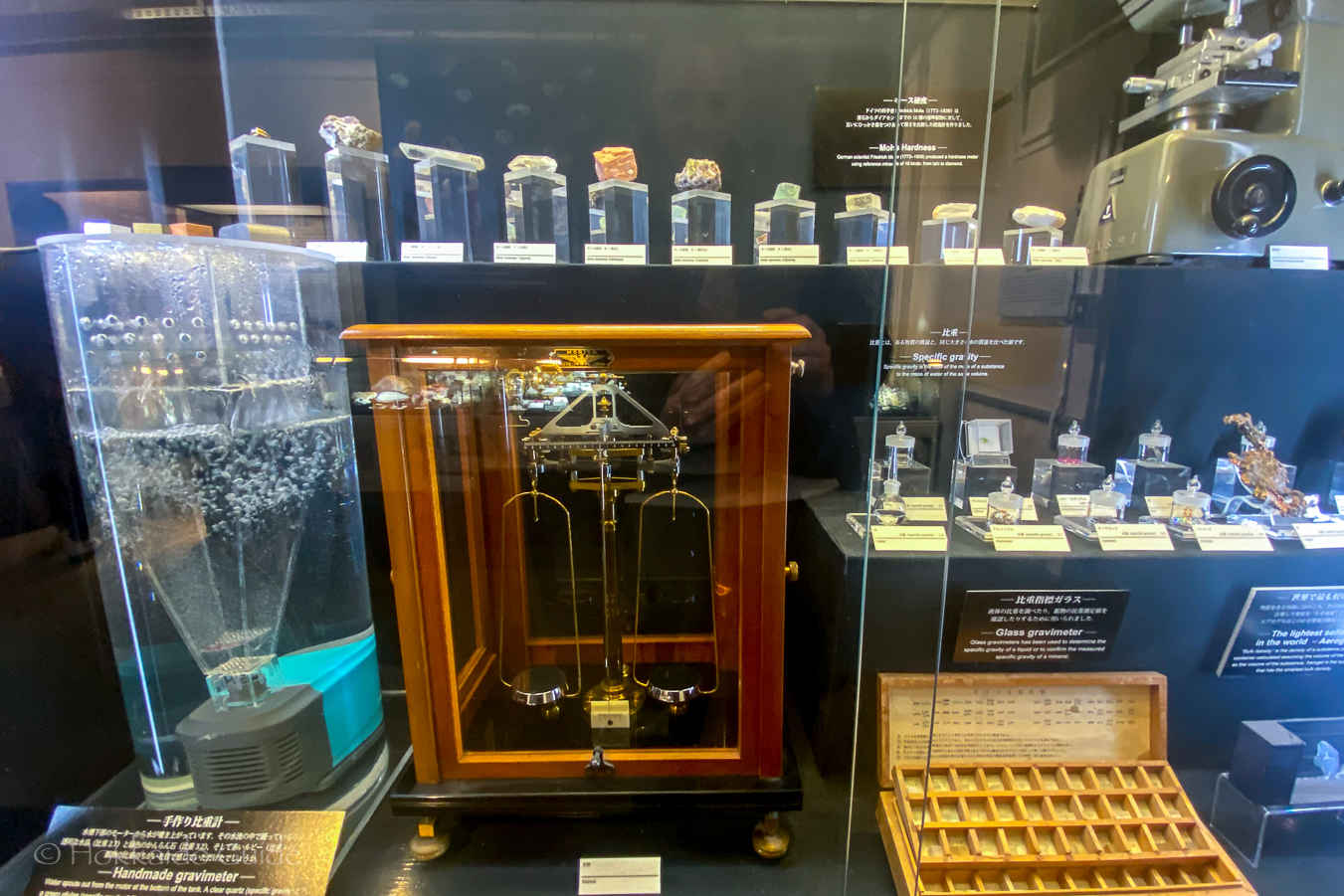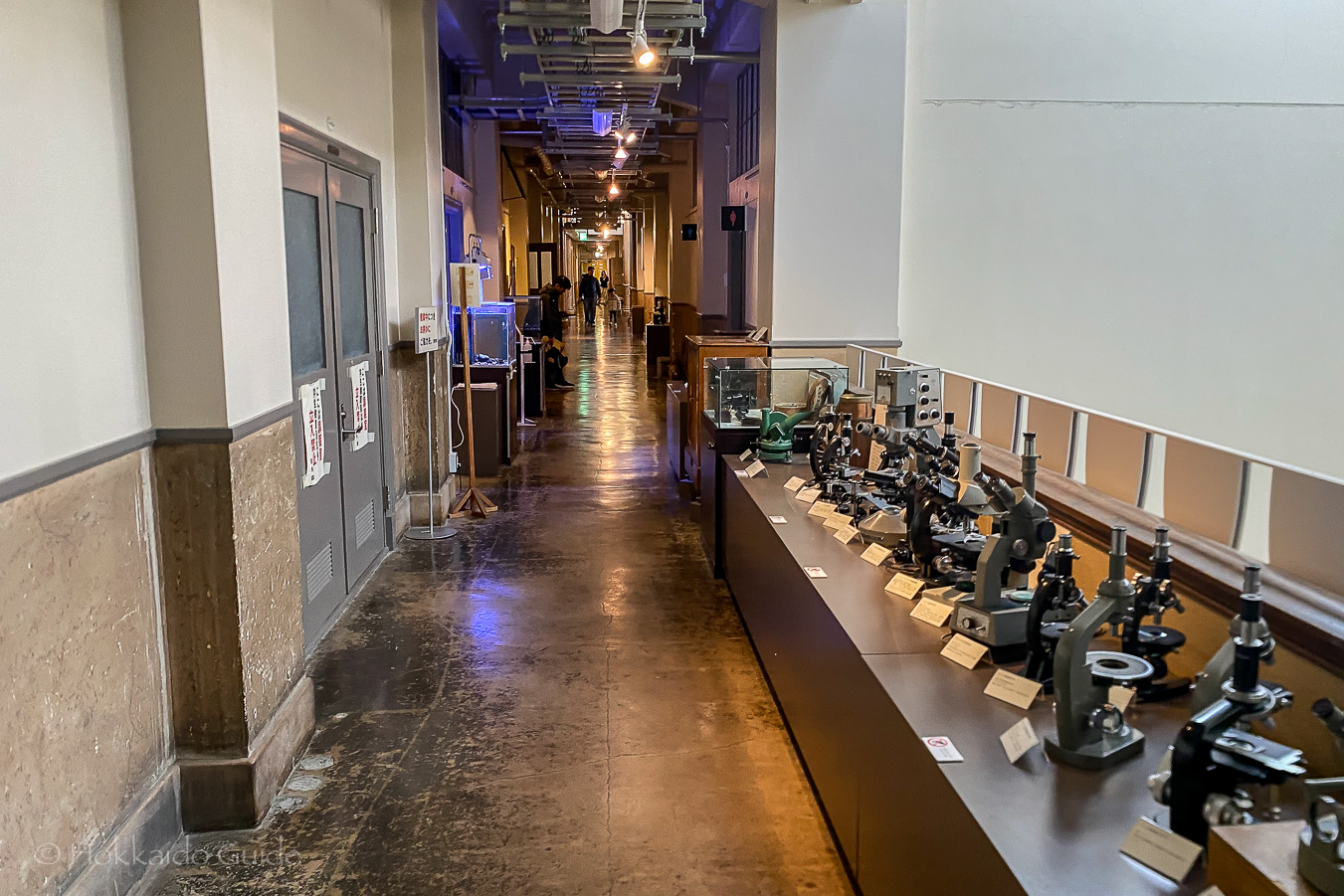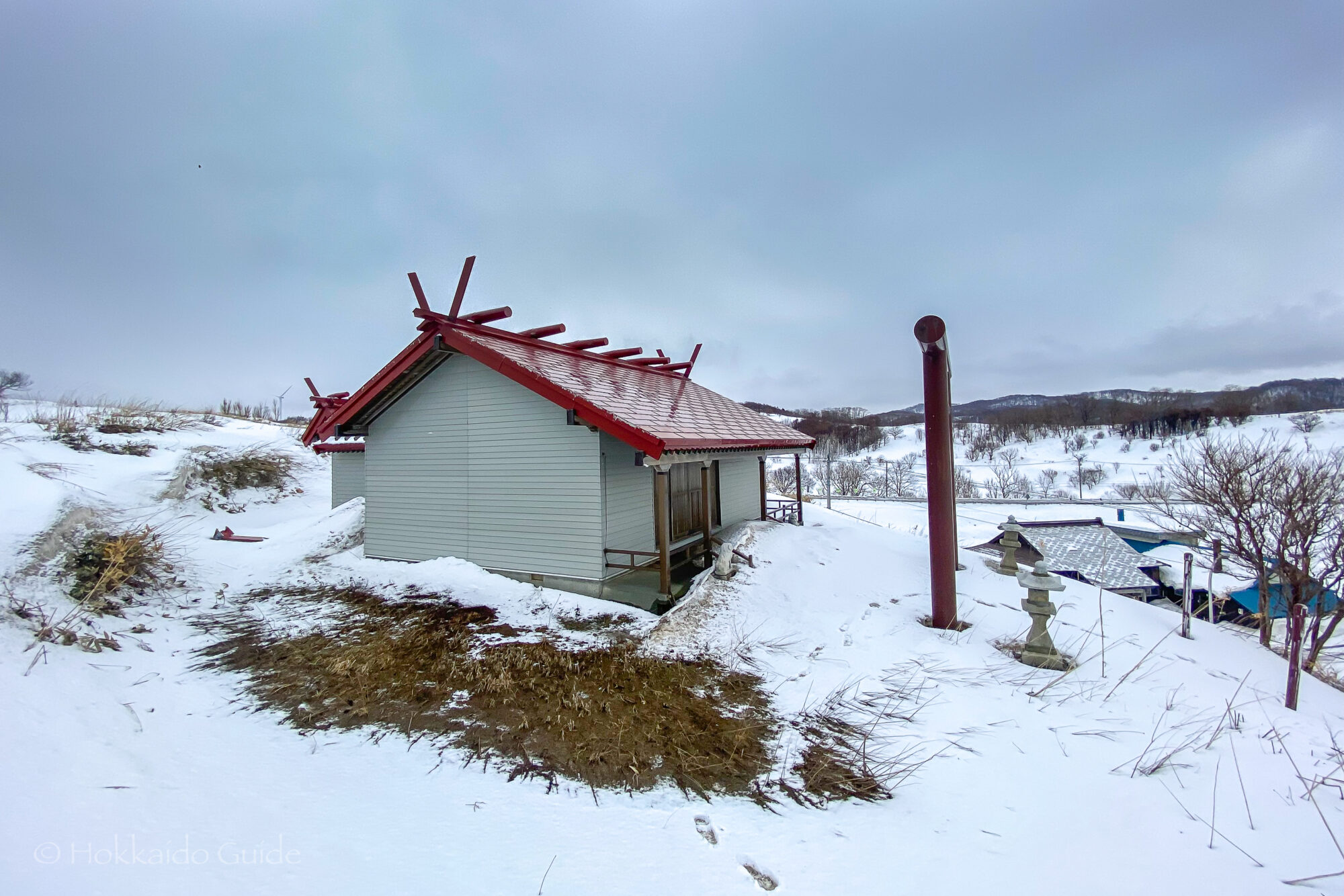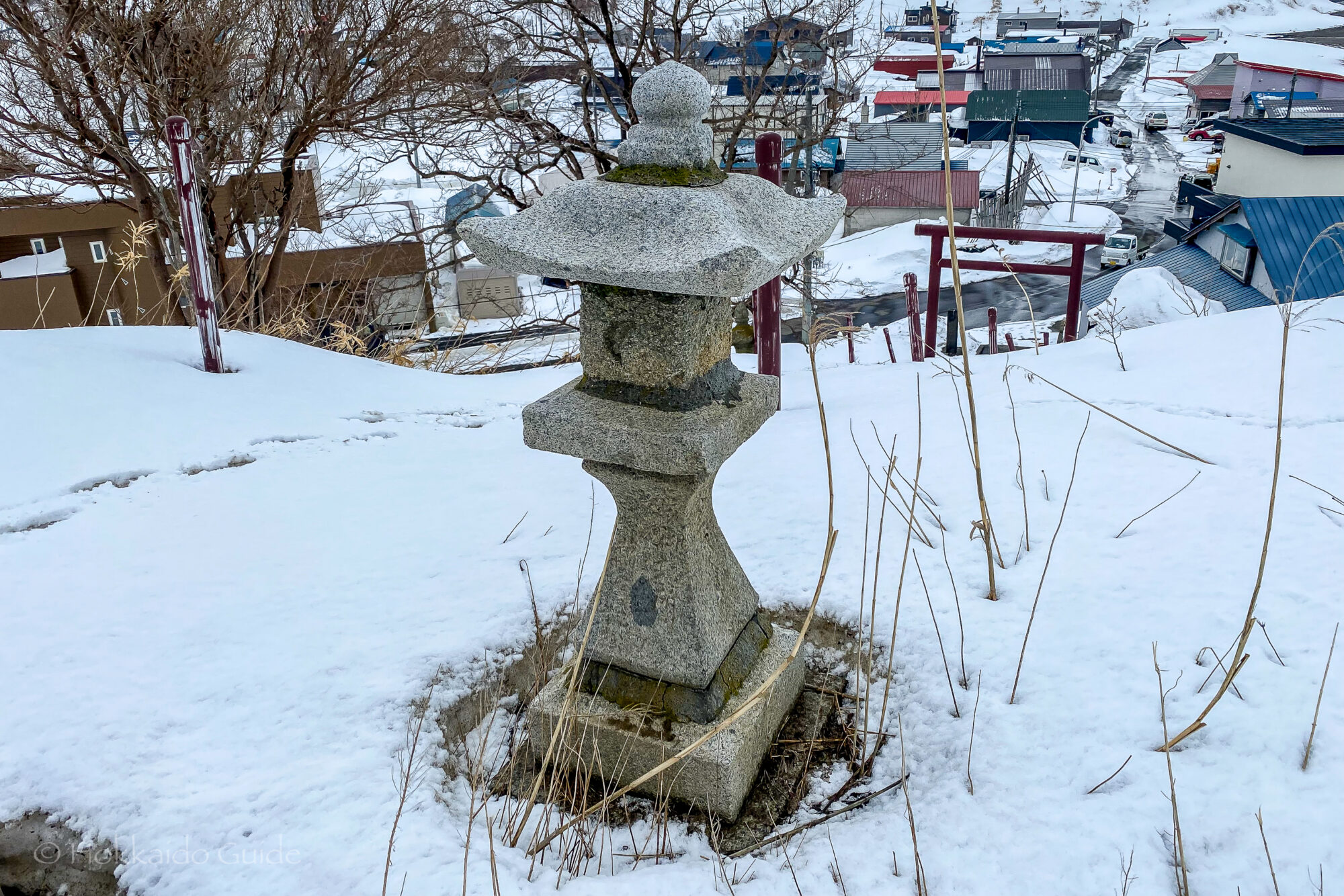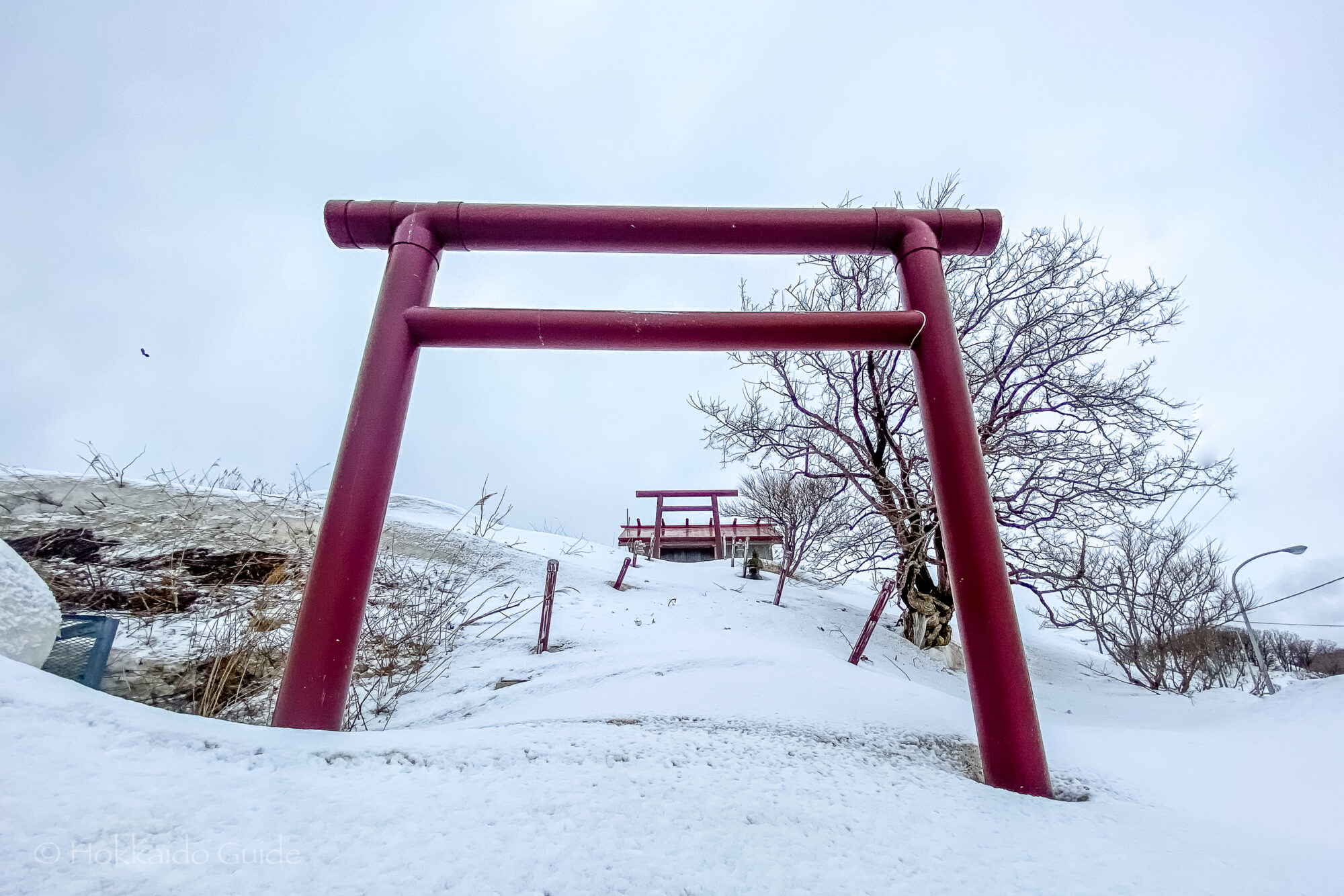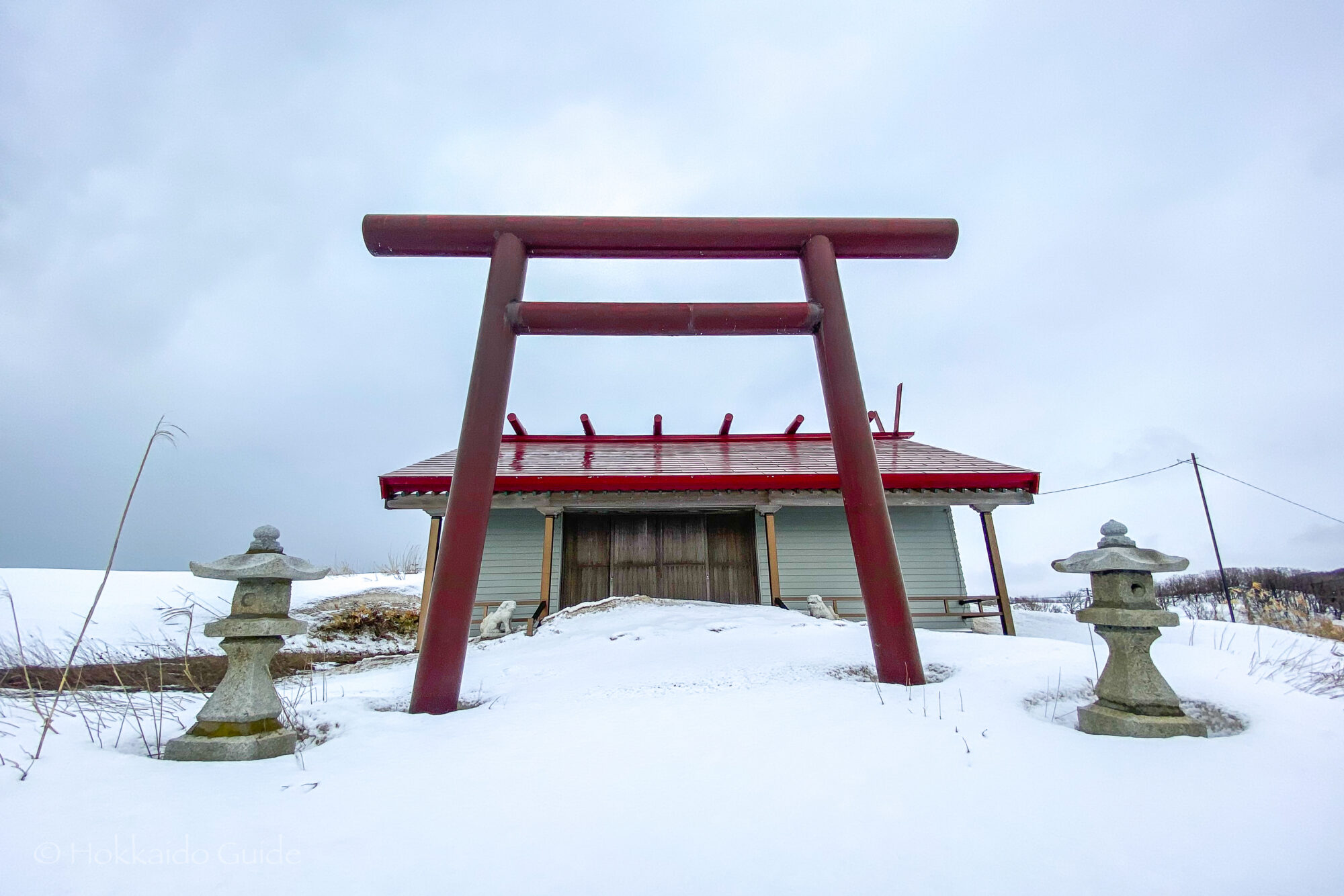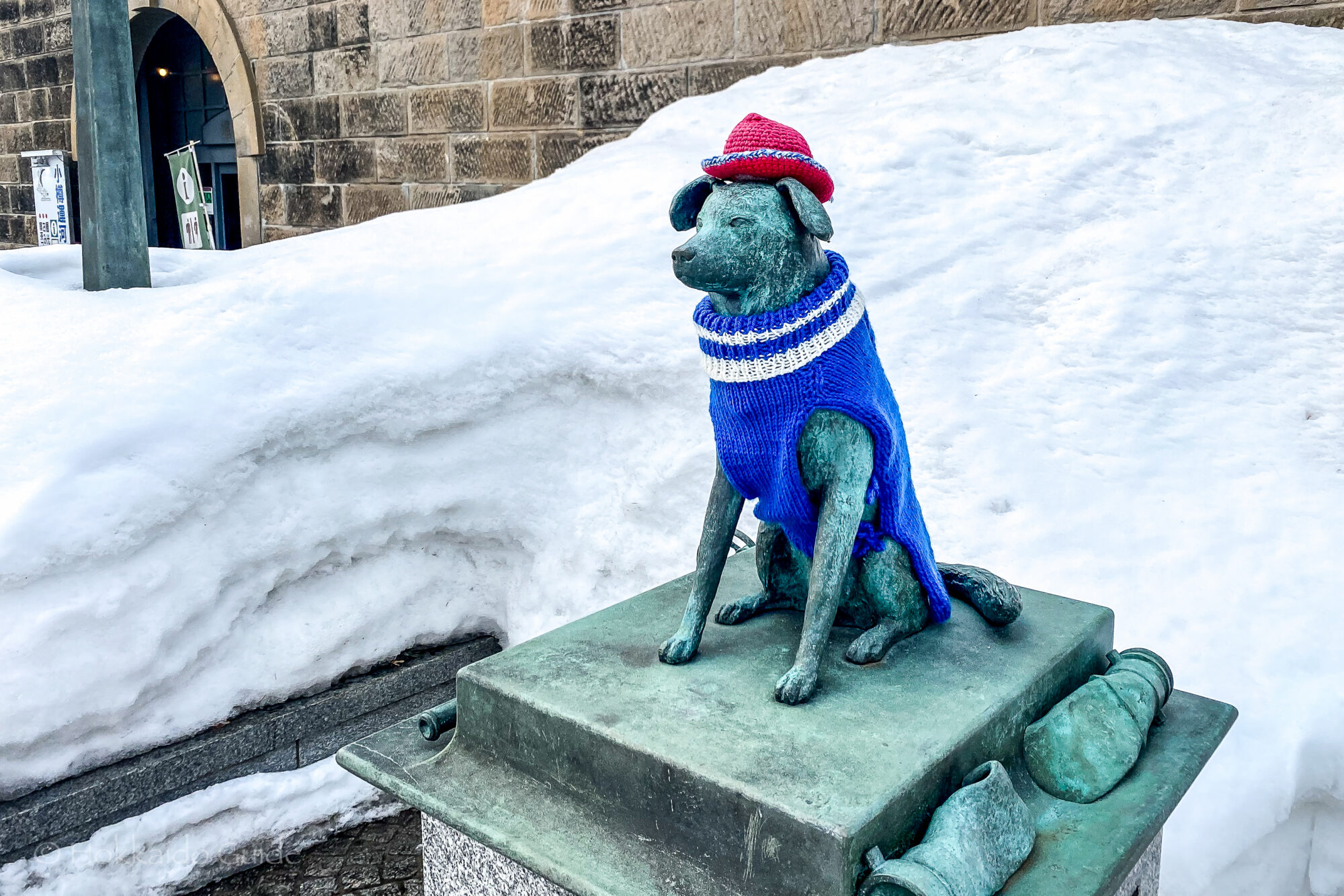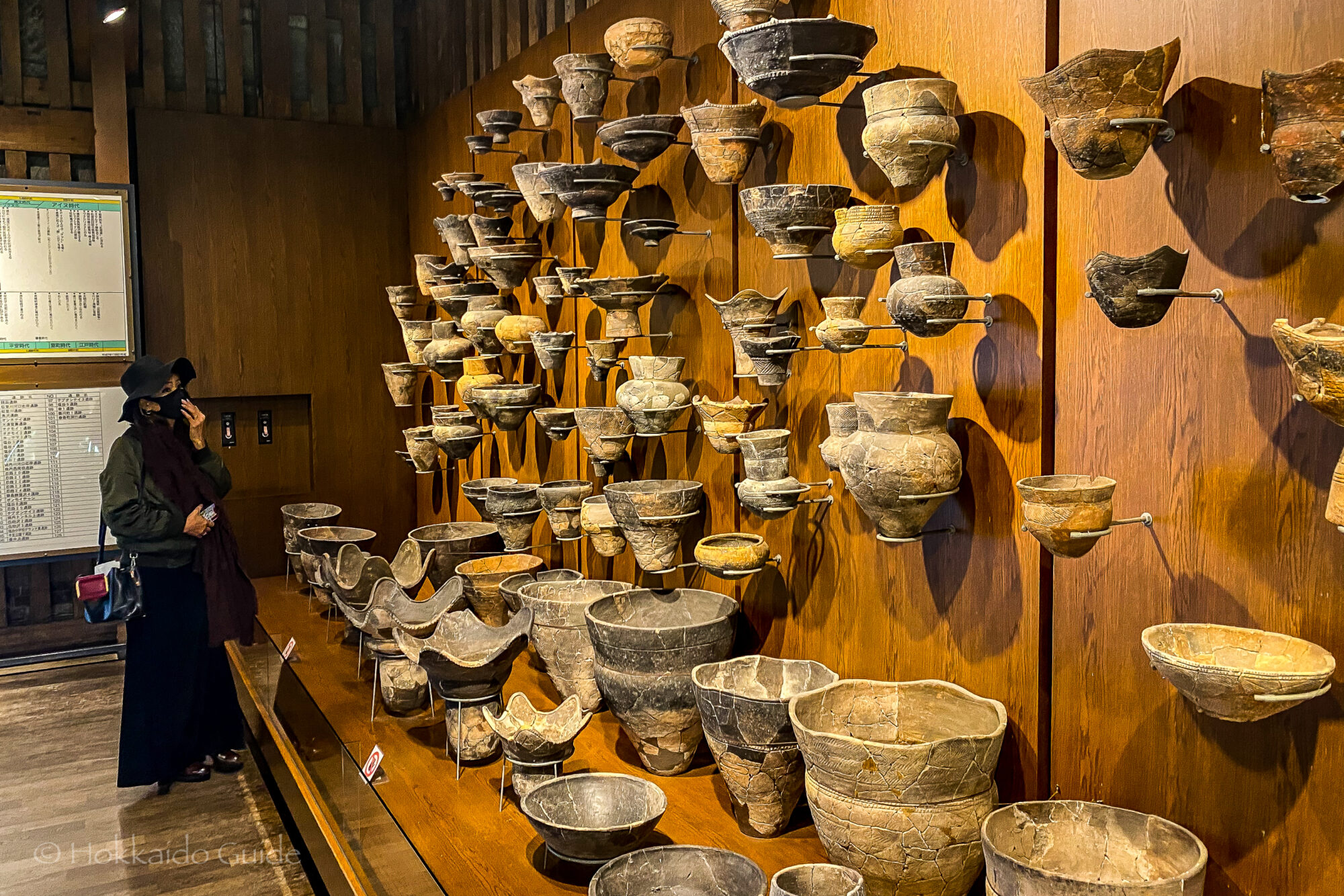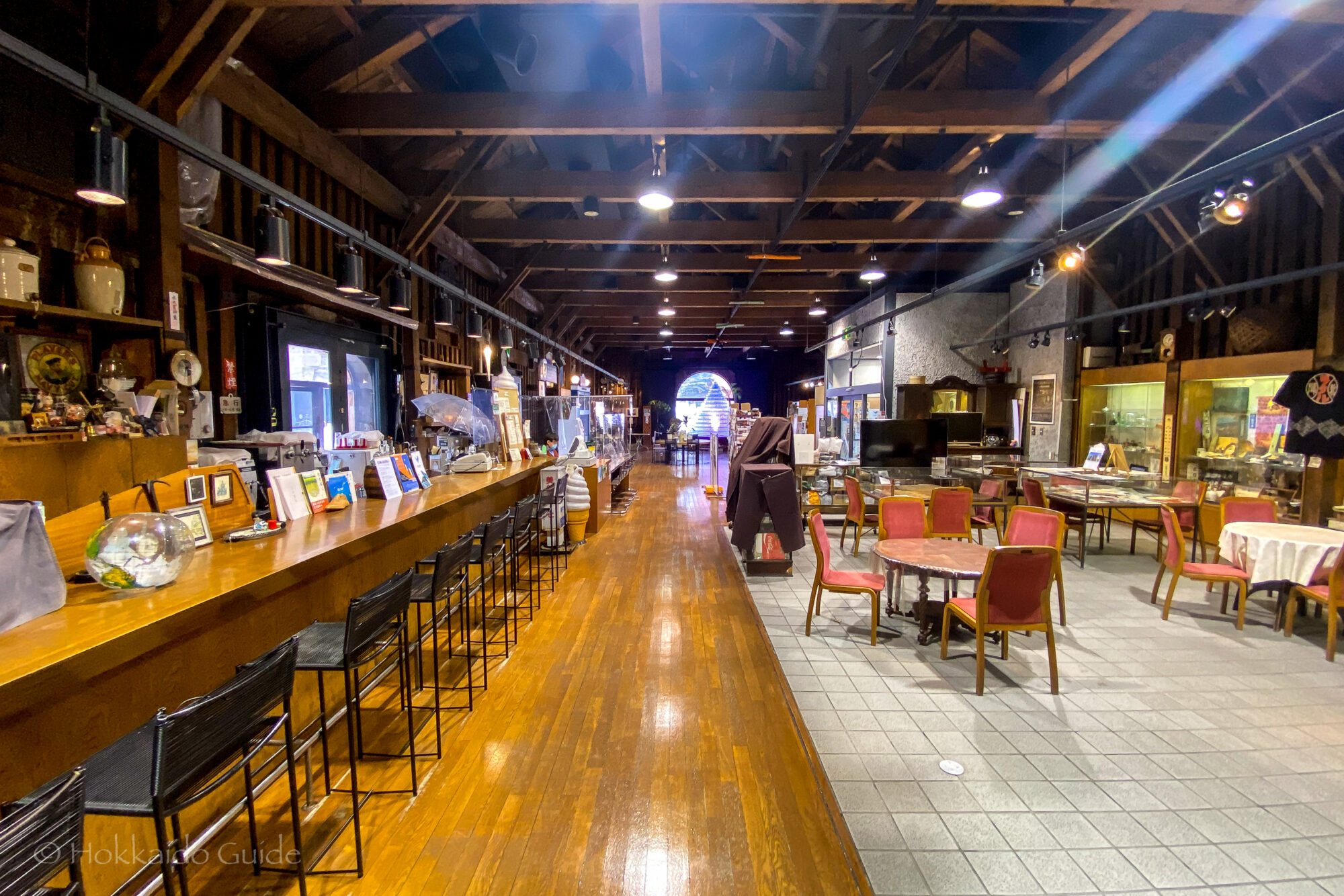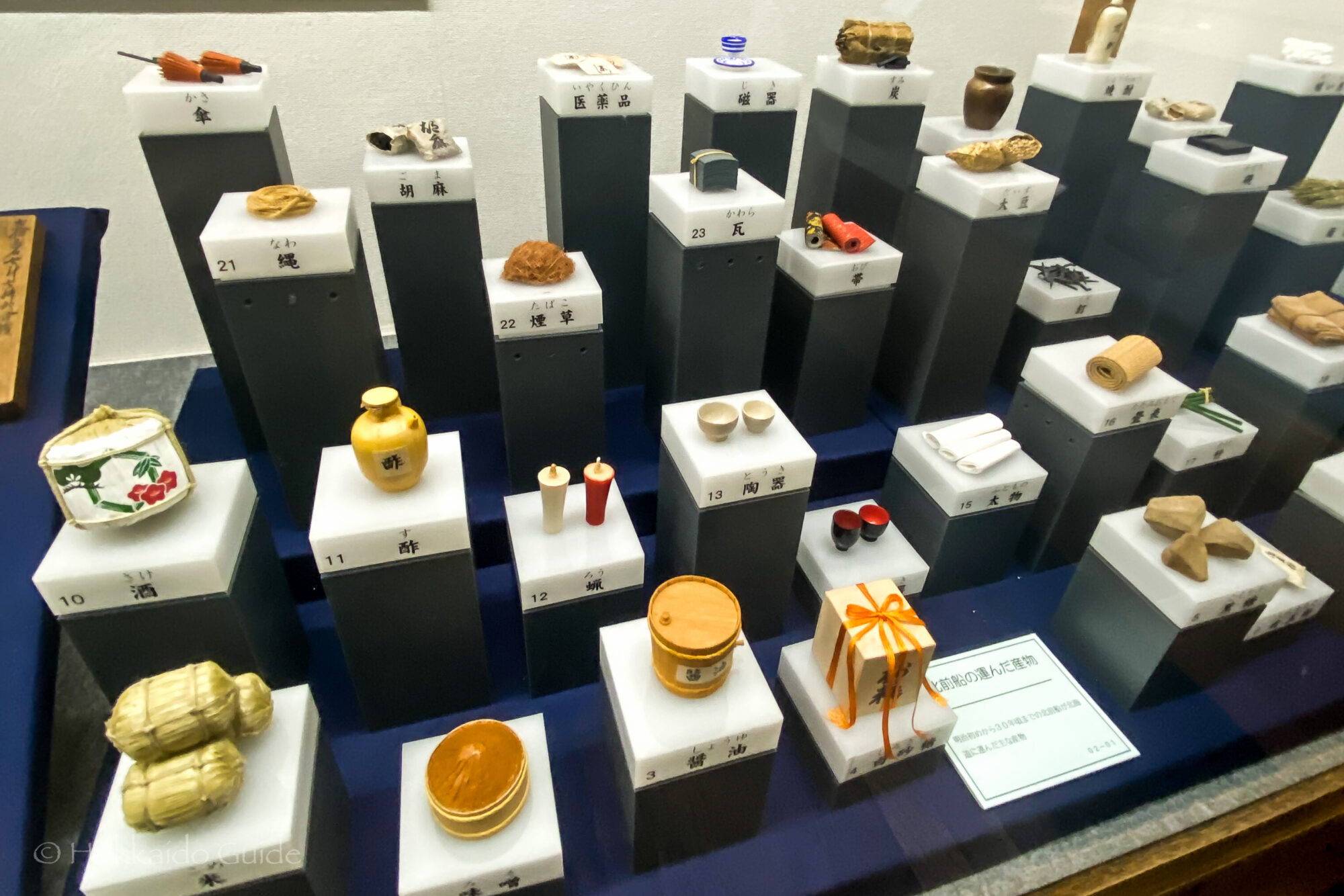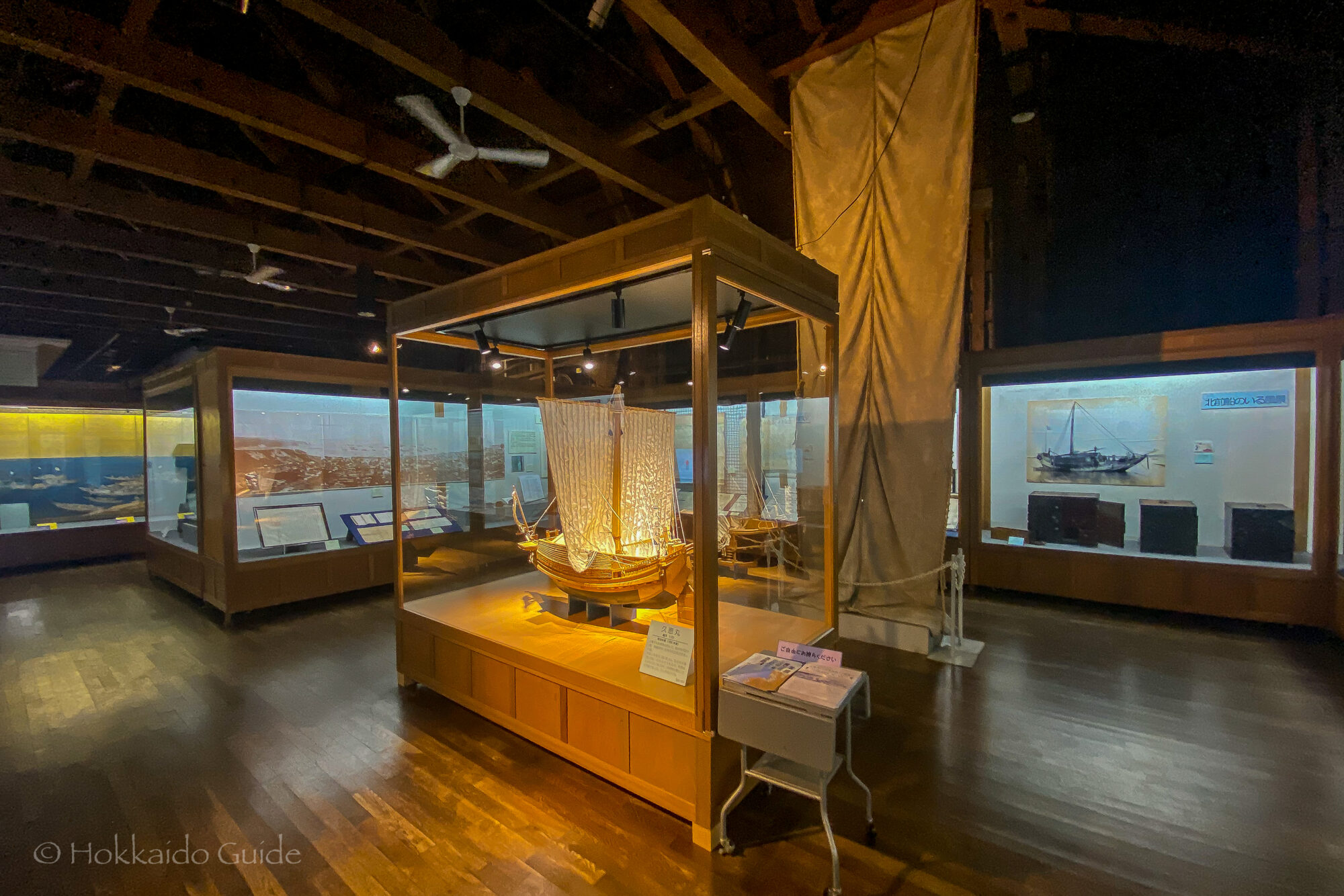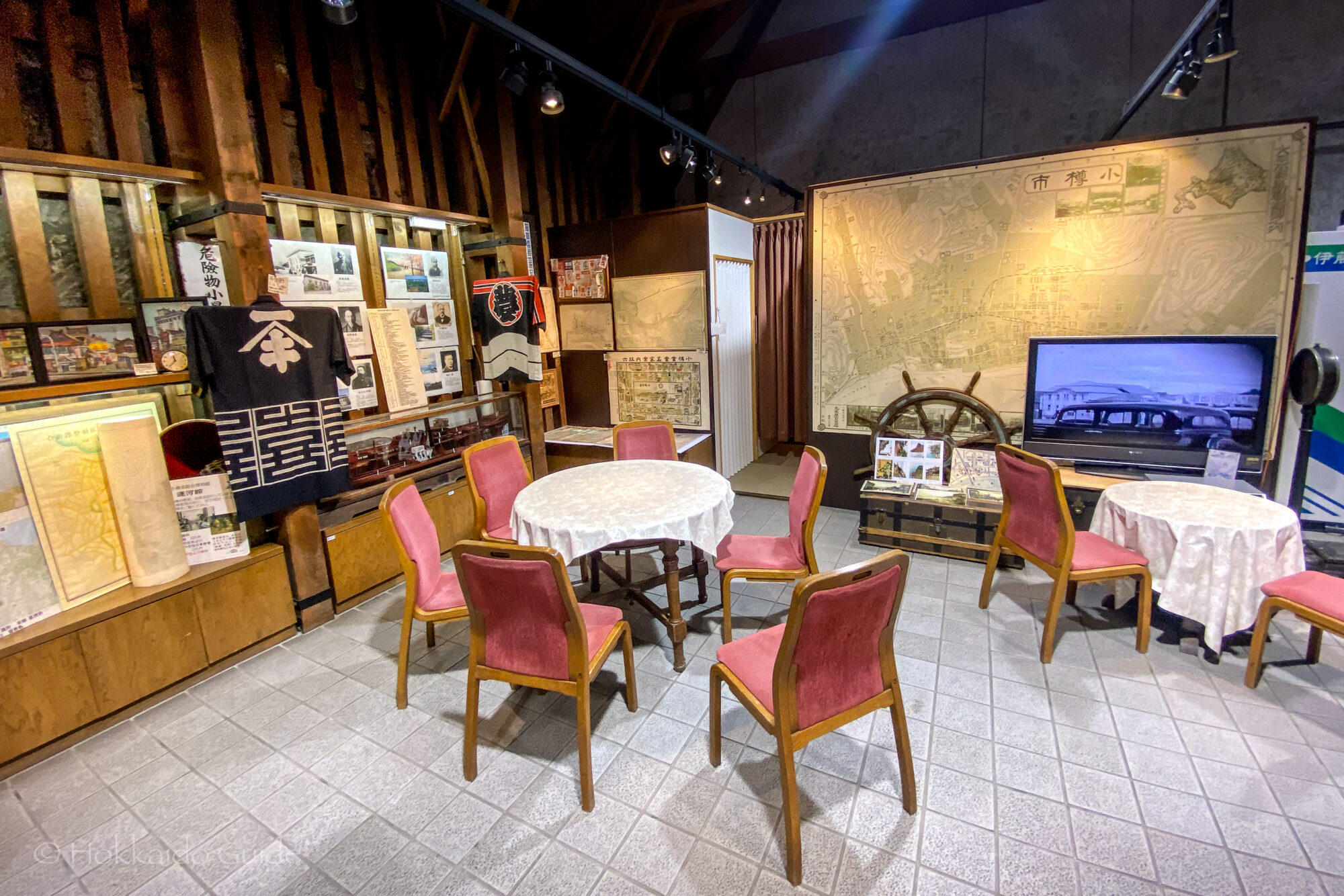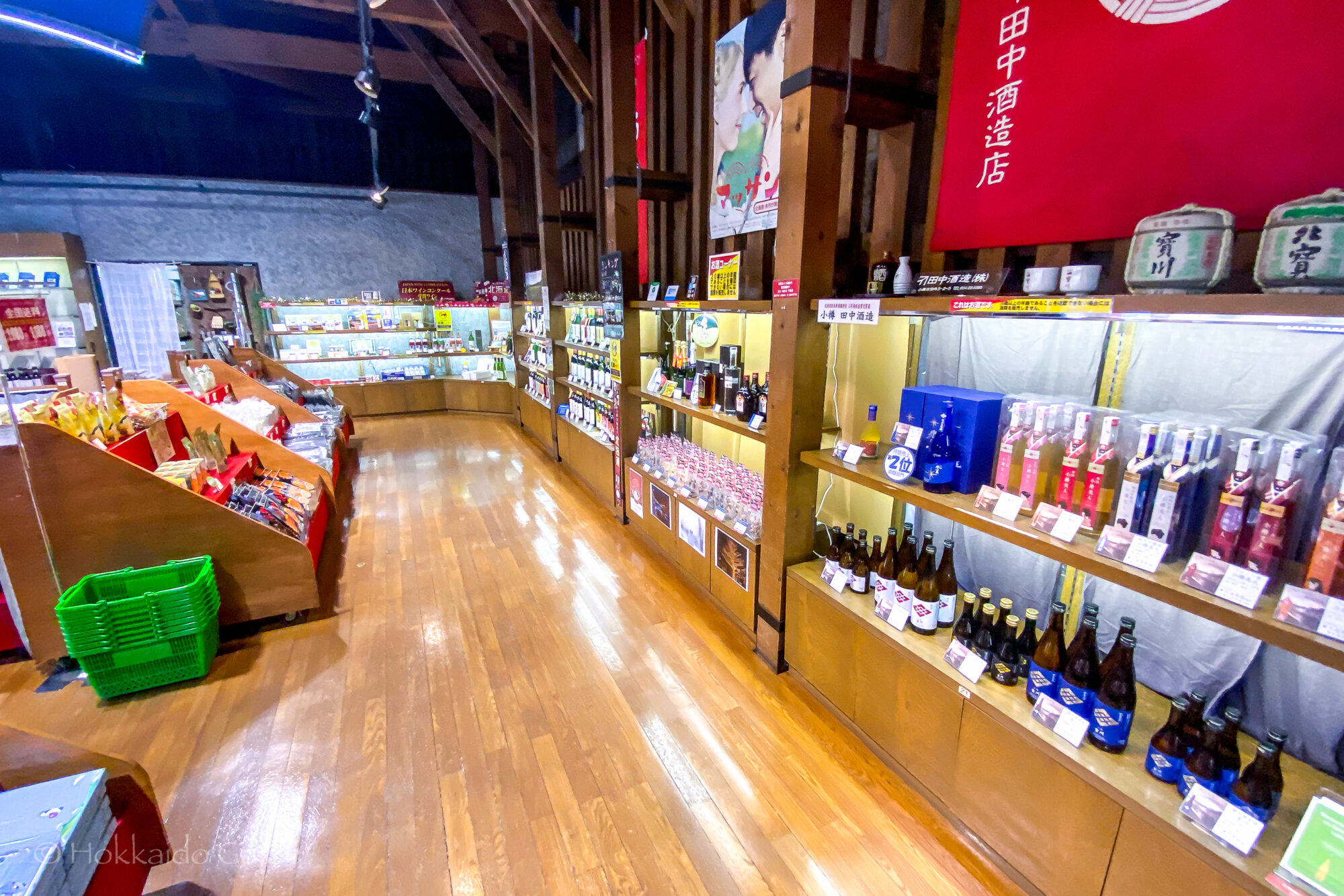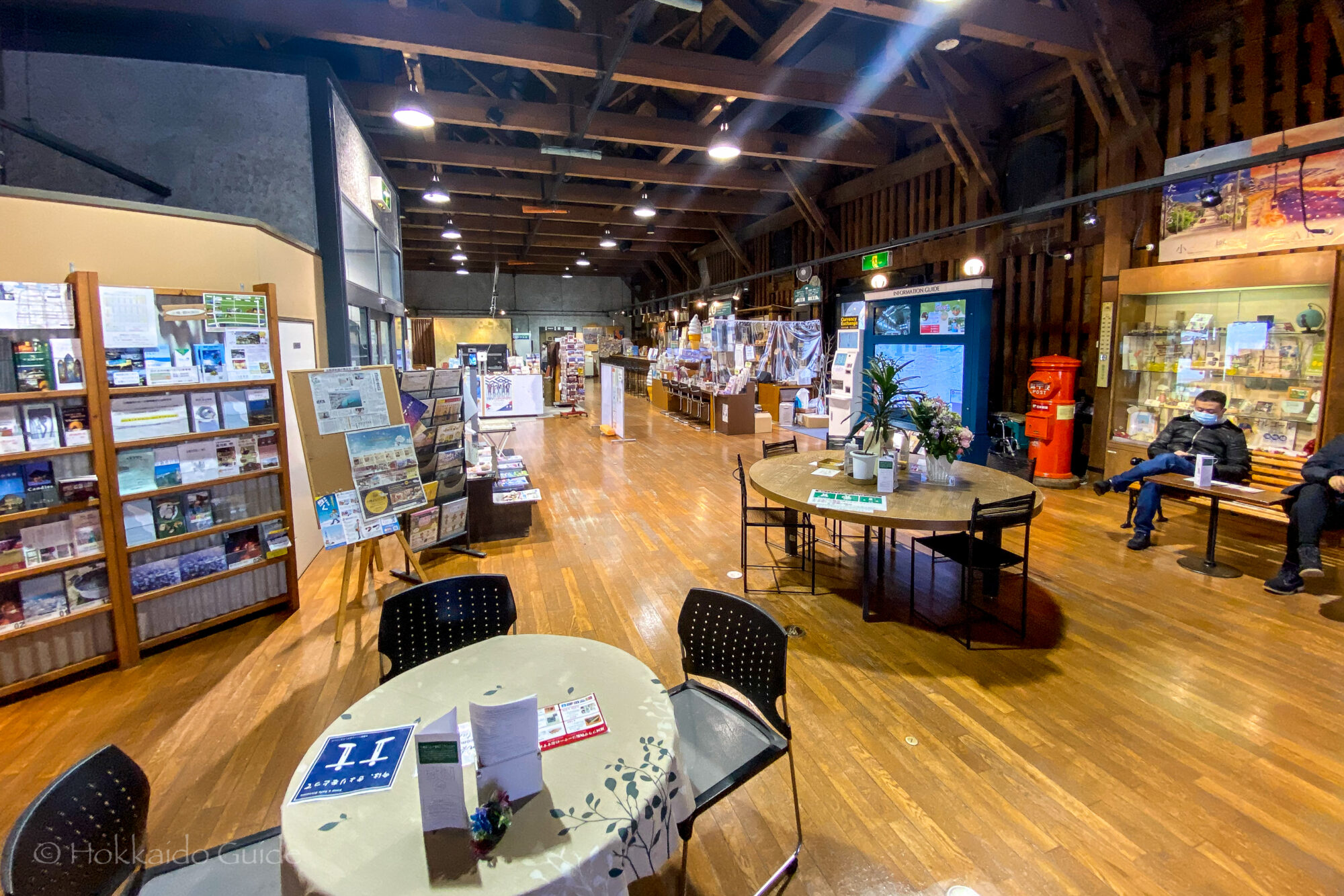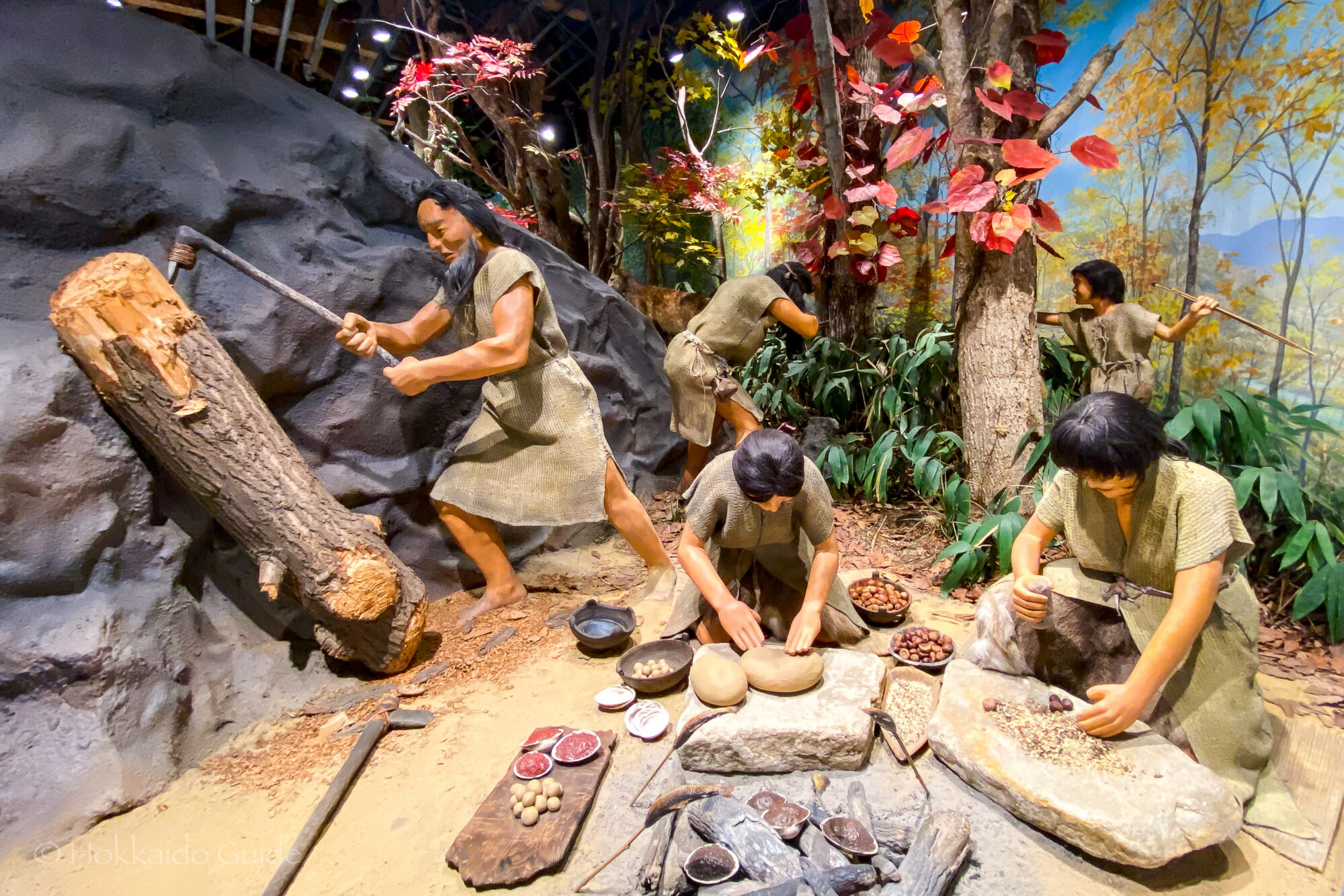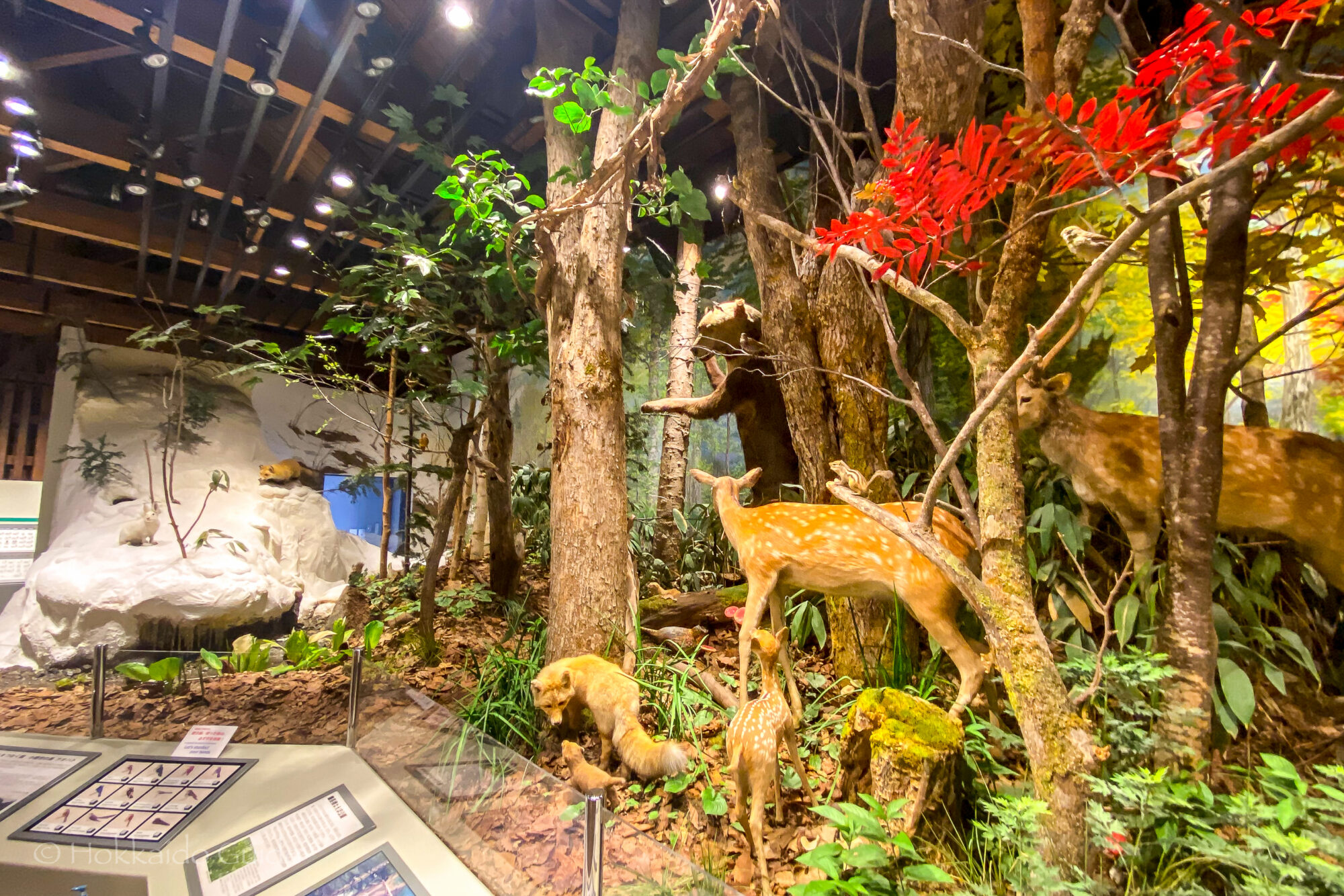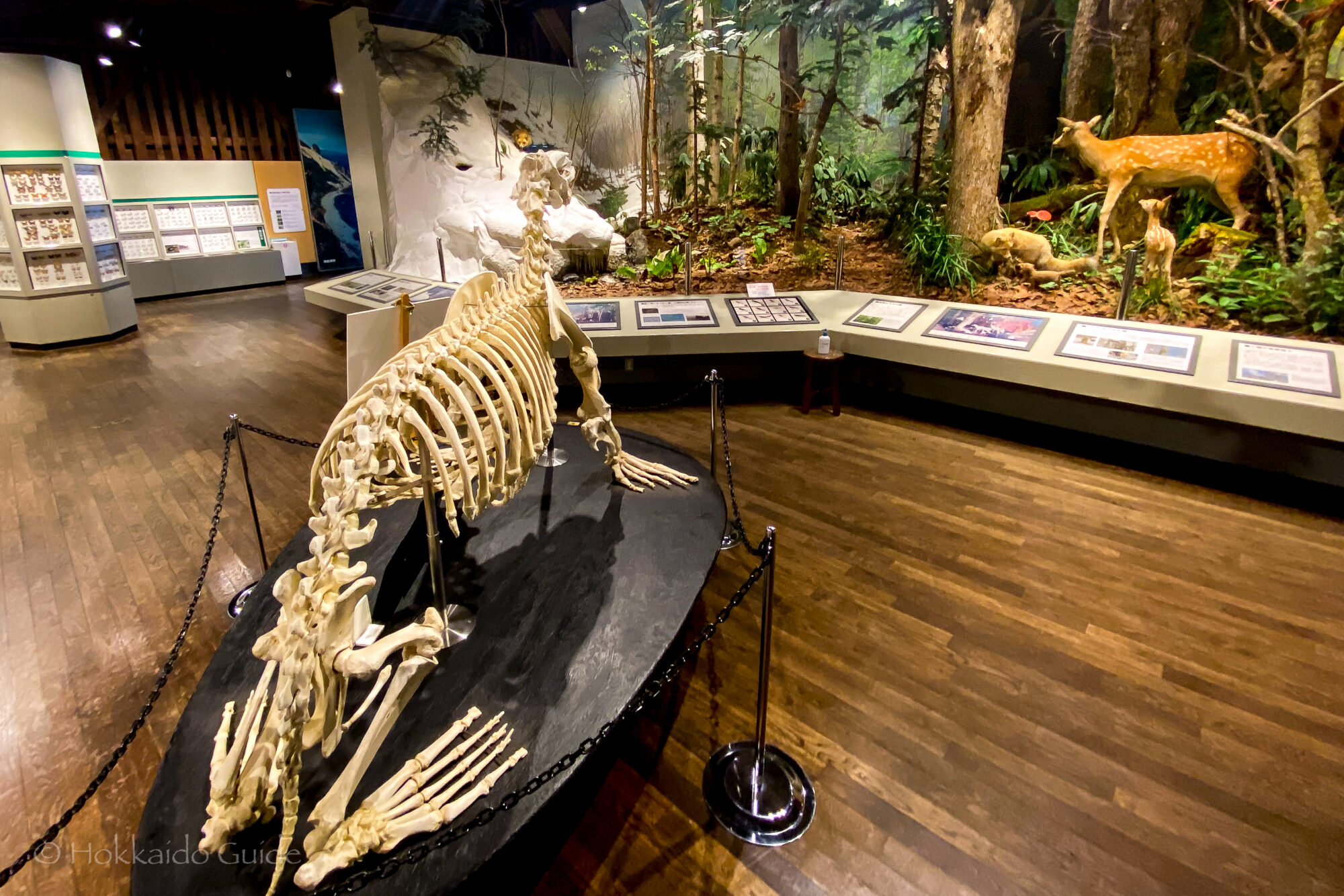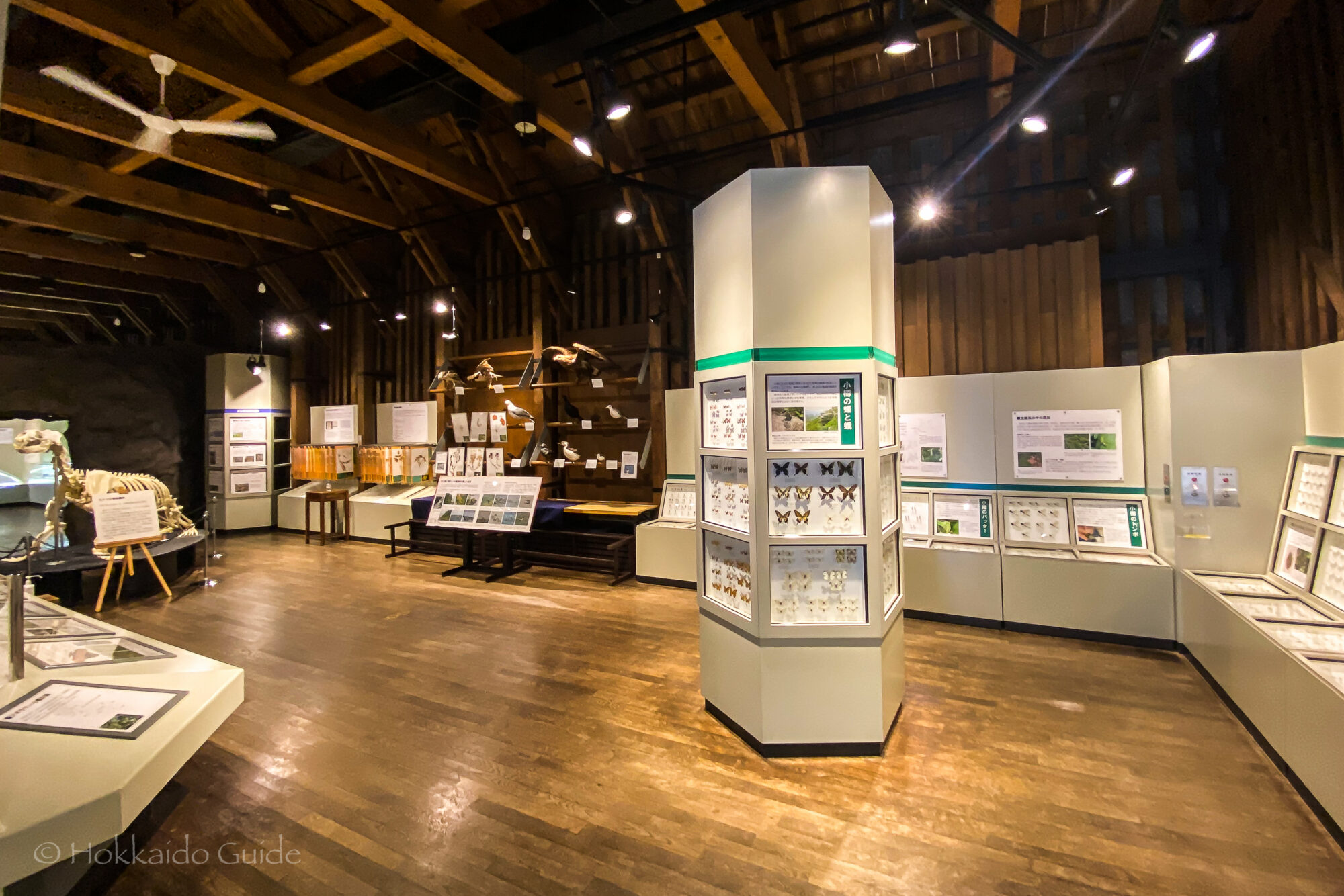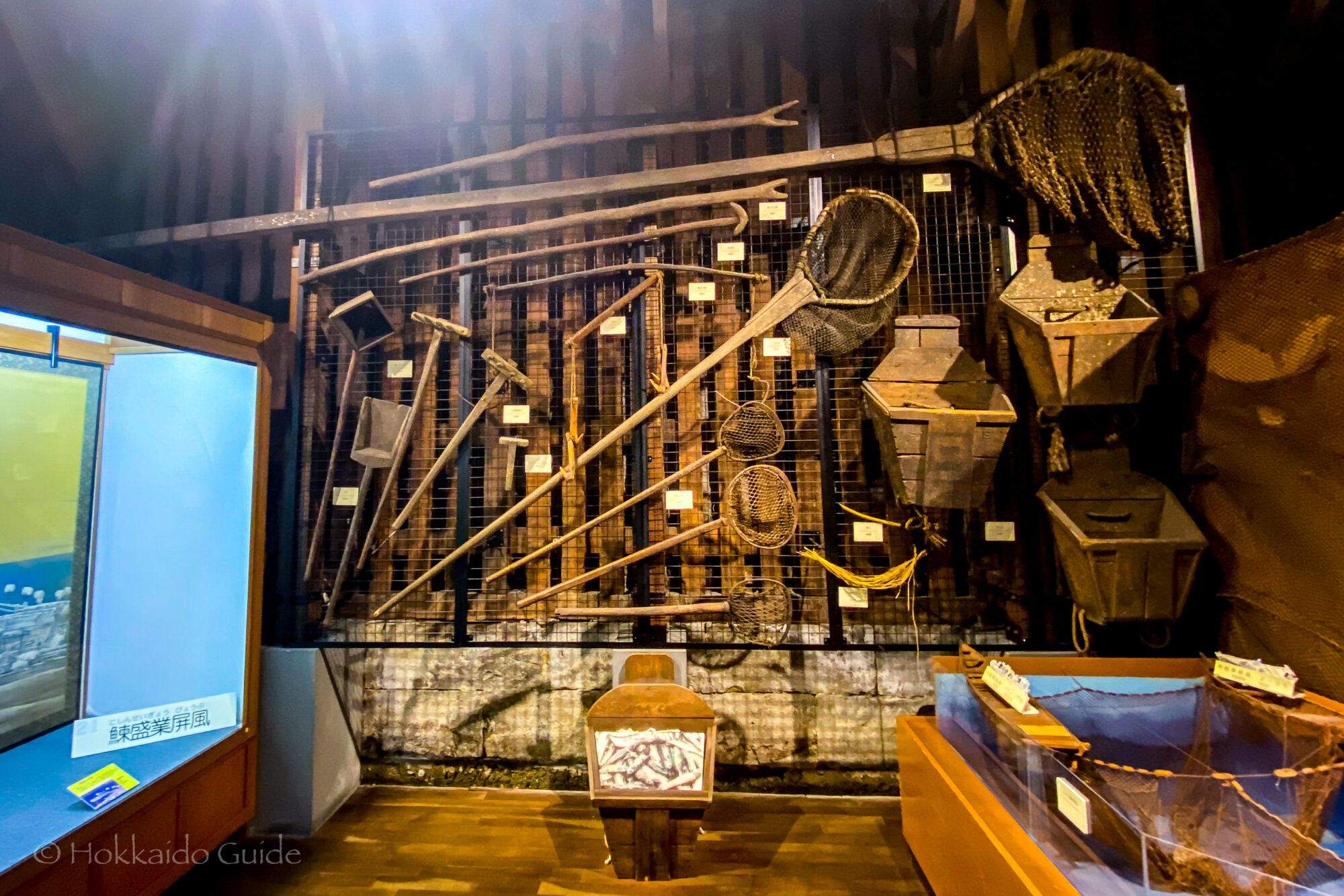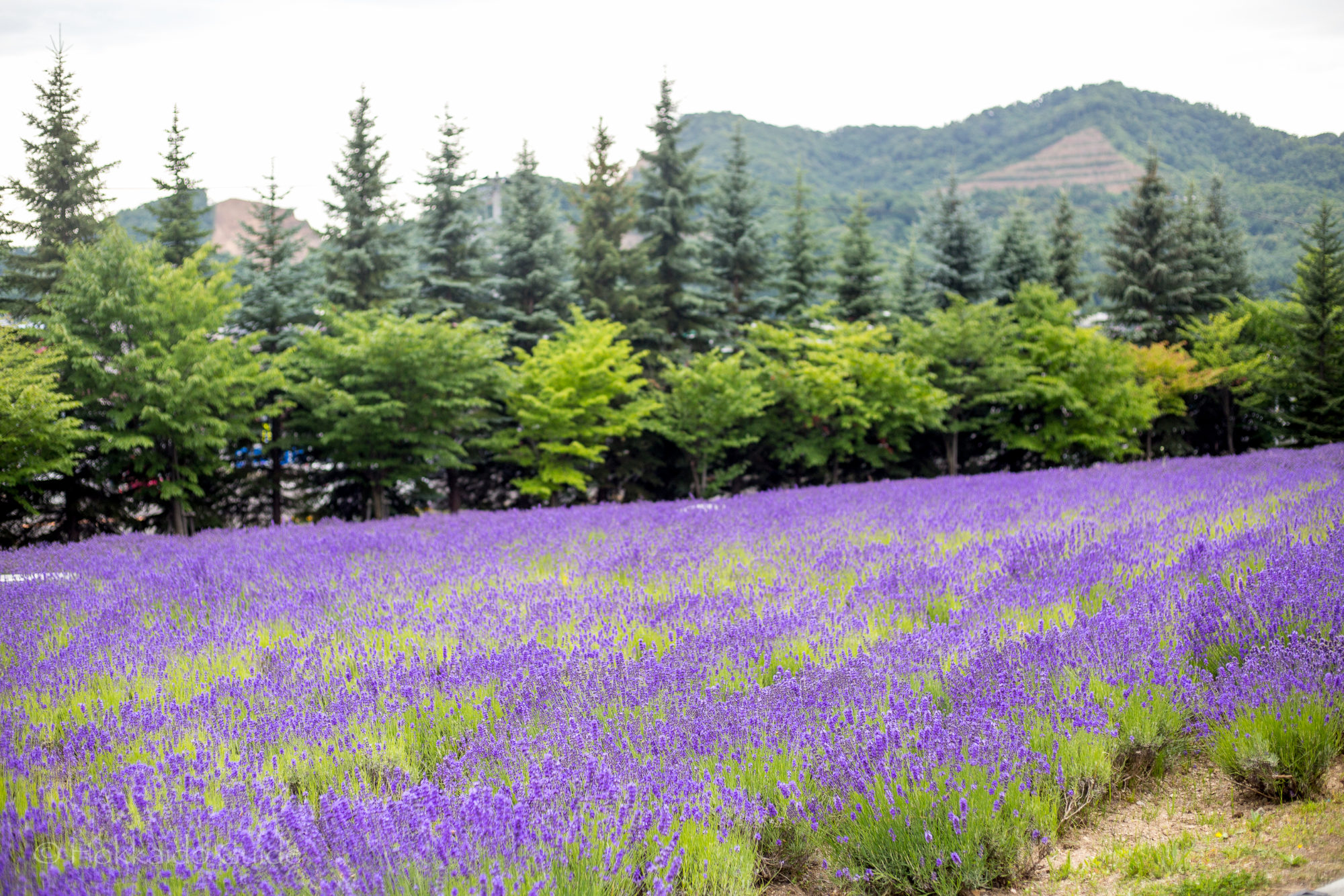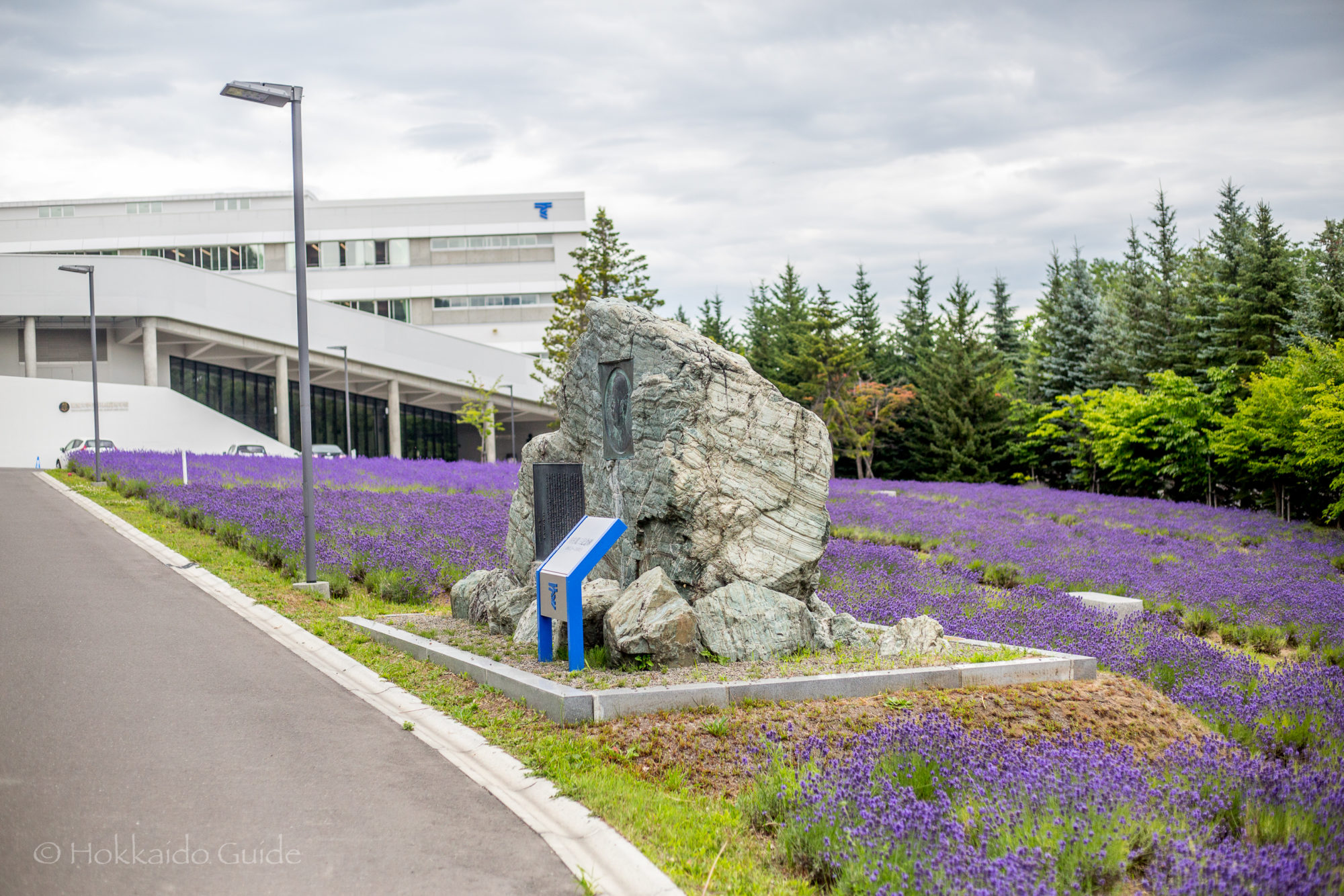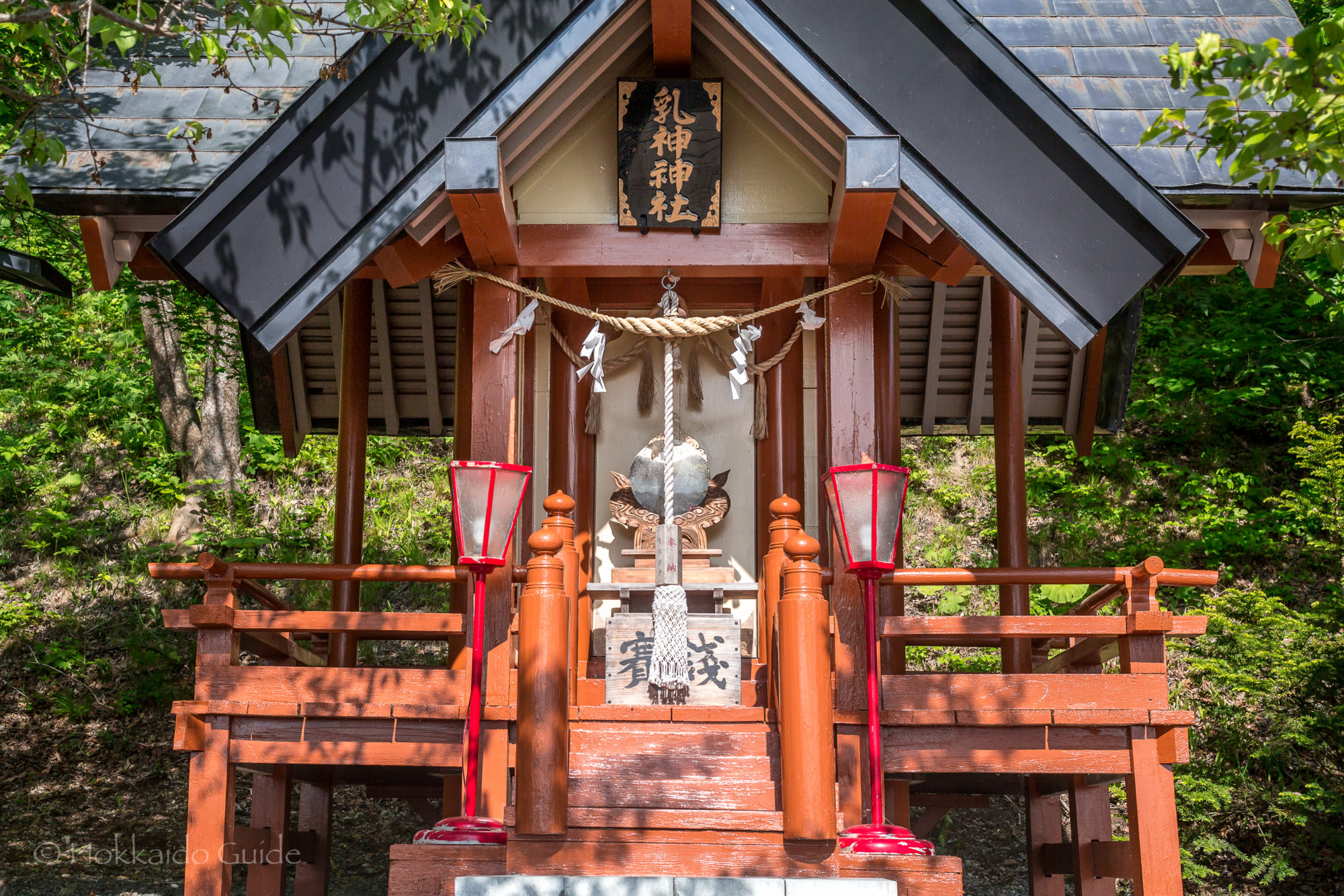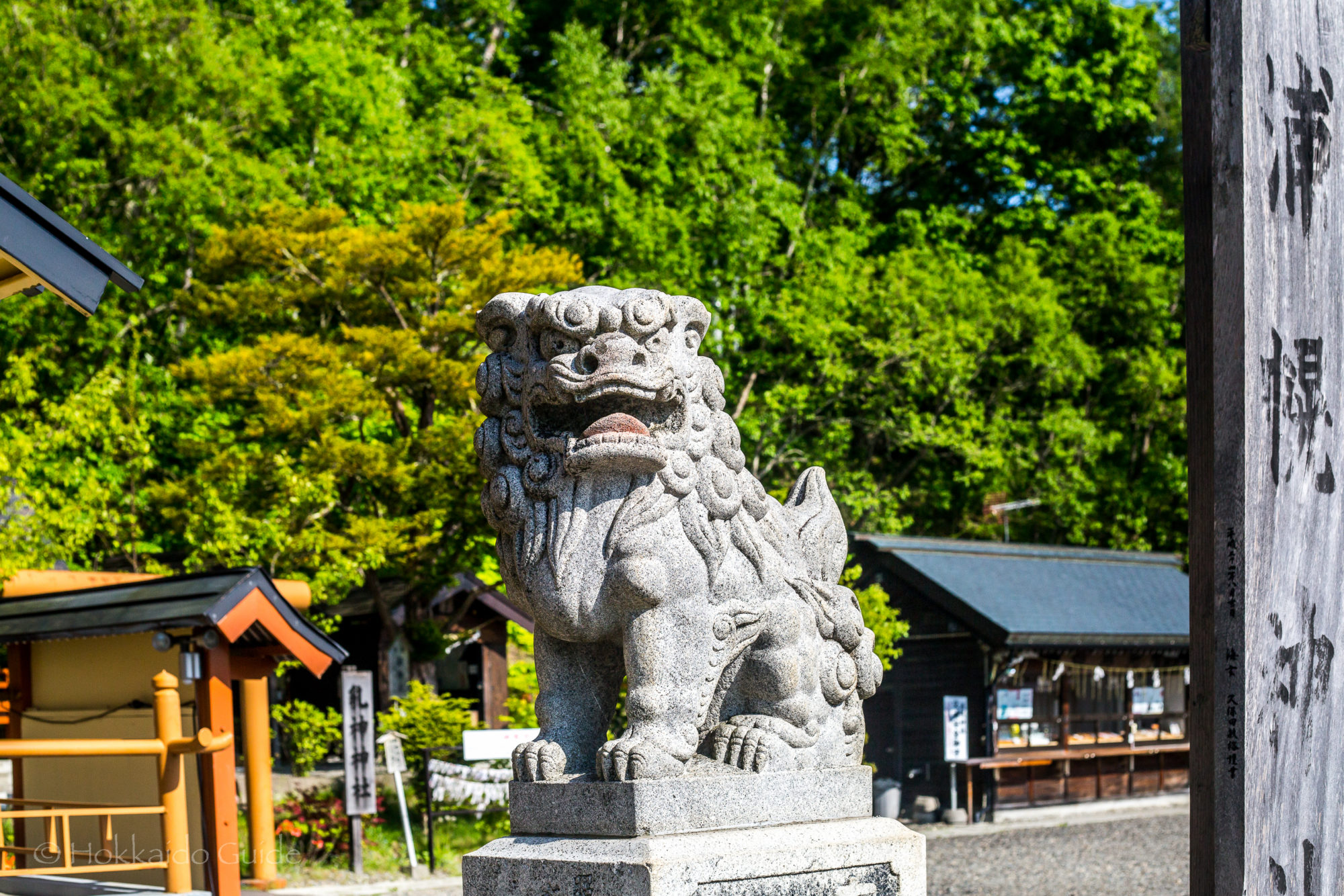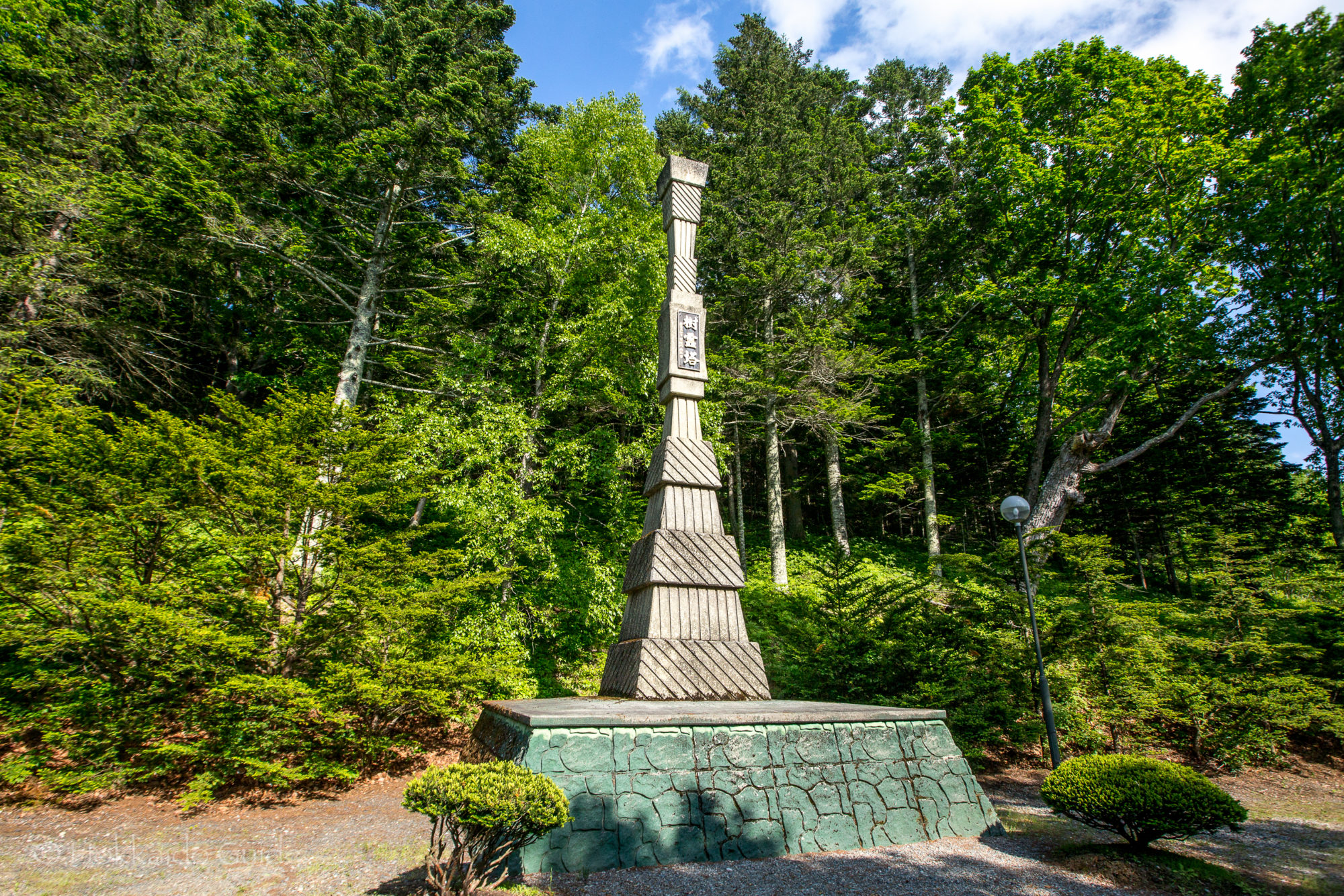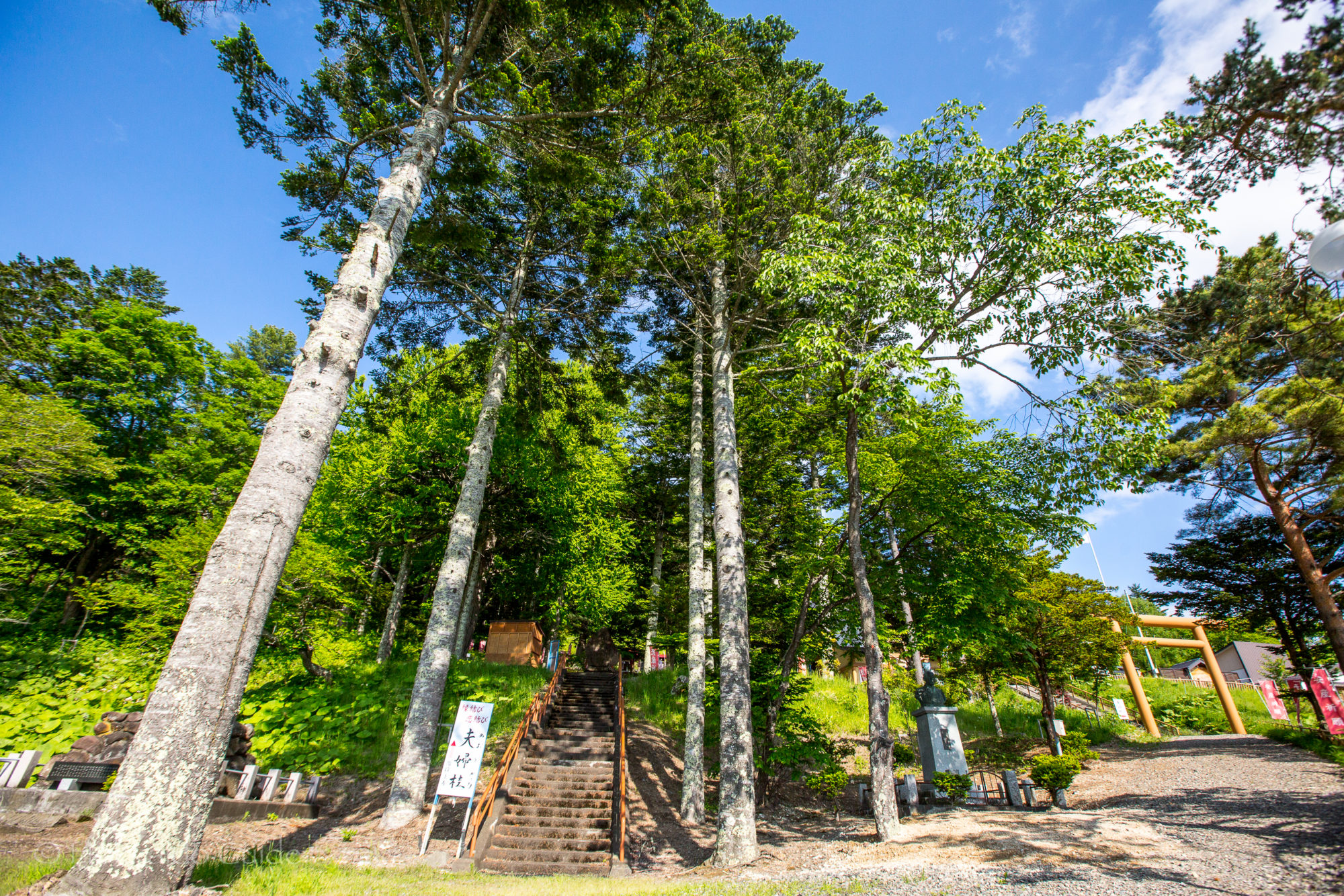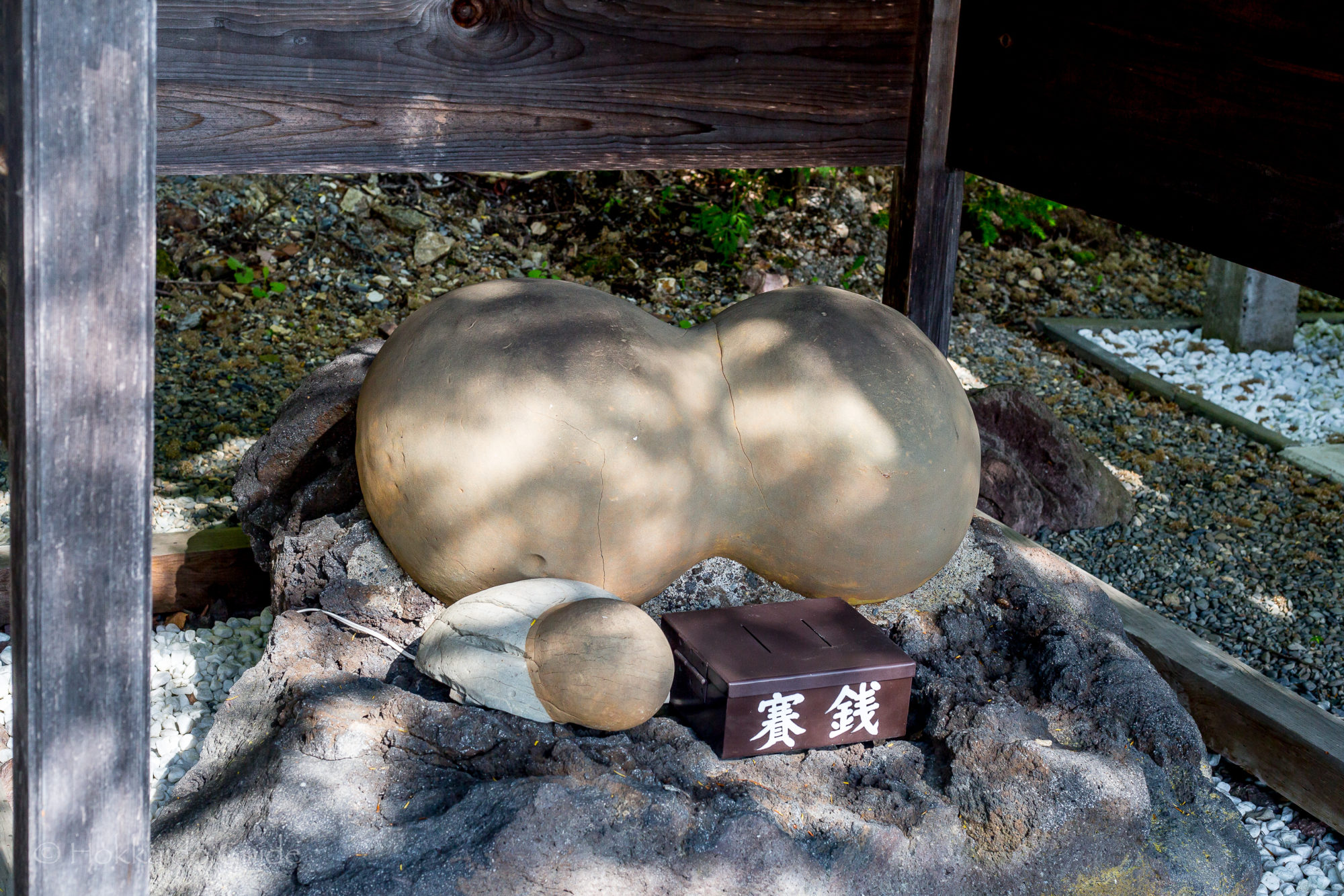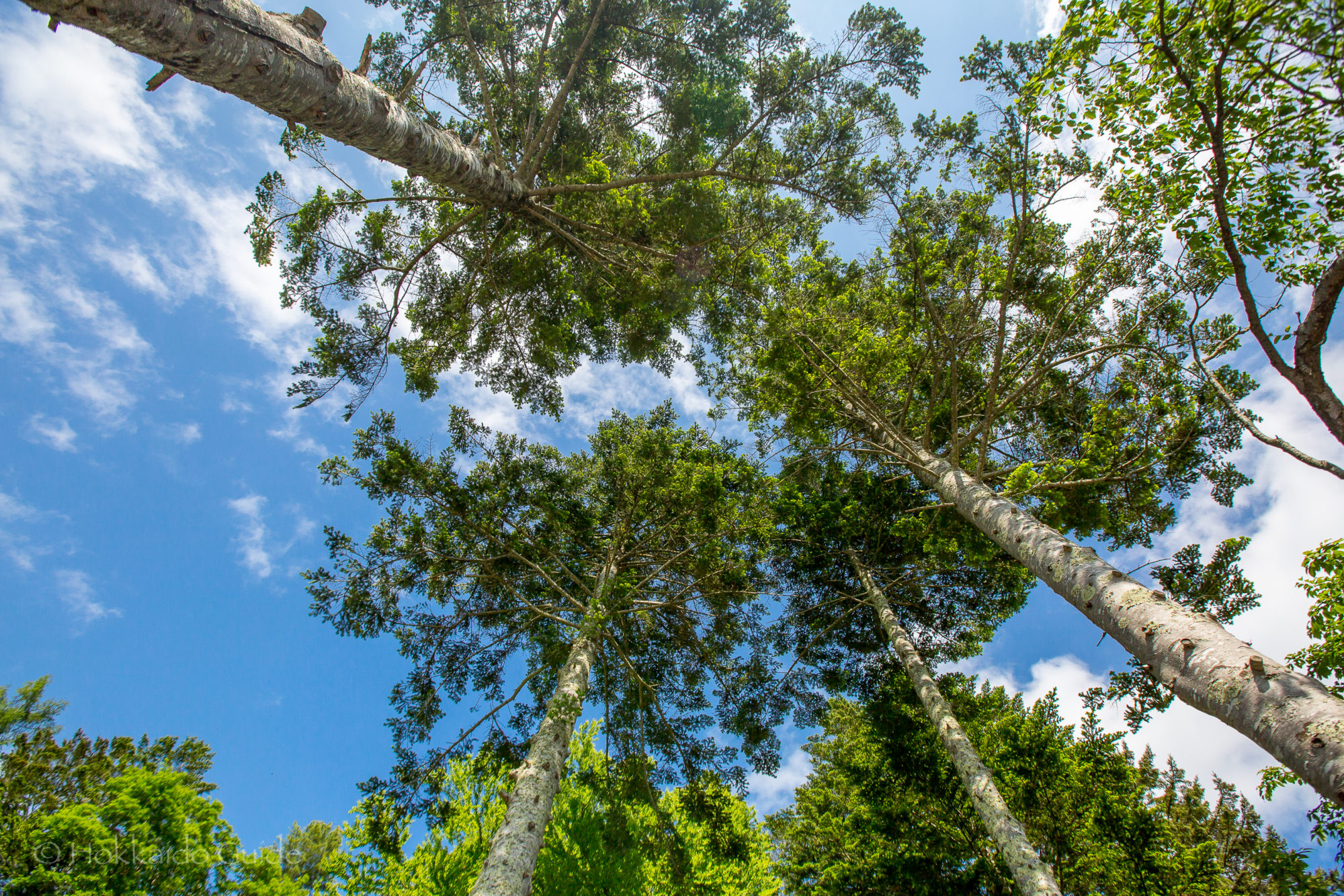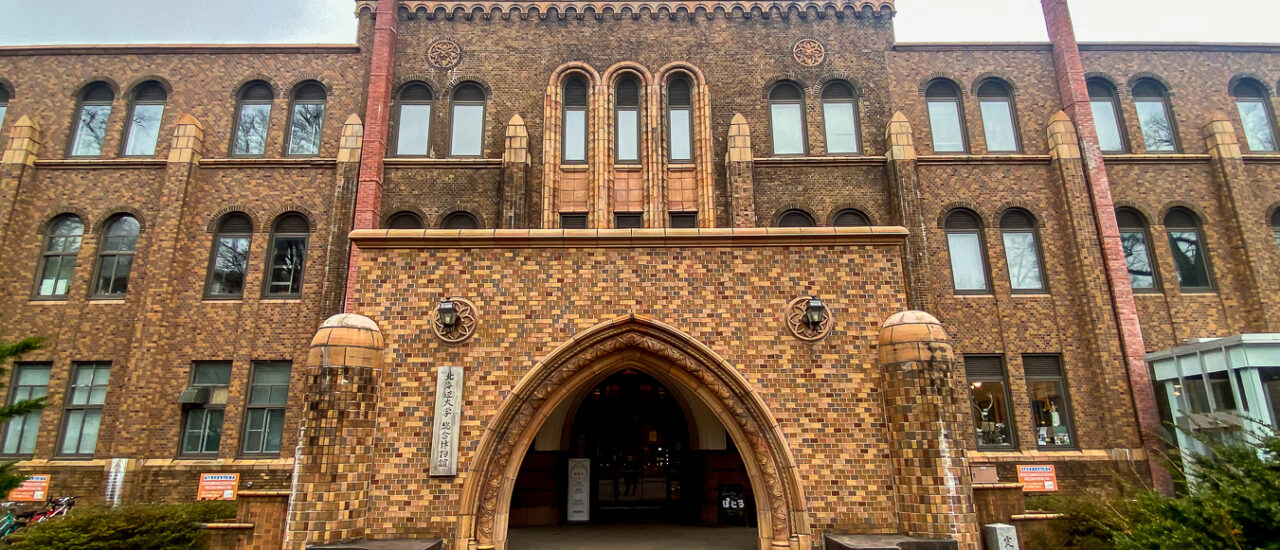
Category: Sightseeing
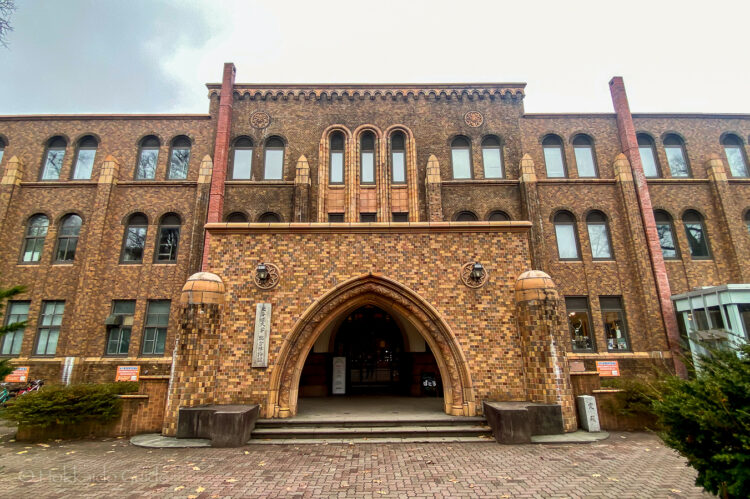
Hokkaido University Museum

| Pricing Guide (Avg. cost per person) | Free entry |
| Opening Hours | 10:00 - 17:00 |
| Closed | - |
| Contact | 011-706-2658 |
| Notes | No parking, walking distance from Sapporo station, exhibits mostly in Japanese |
| Location | This museum is easy to access. It is a 15 minute walk from Sapporo station. Start by taking the north exit from the station and take a nice walk through the University grounds. 8 Chome Kita 10 Jonishi, Kita Ward, Sapporo, Hokkaido 060-0810 |
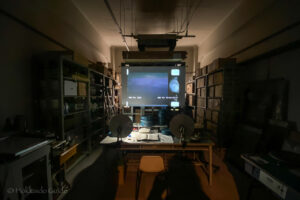 Walking around the grounds of Hokkaido University is a nice day out unto itself, and finding the museum here is a nice little bonus. The museum is free to enter and has some great exhibits. What makes this museum good is the old corridors that the visitors get to wander around. This gives the whole place an antiquated feel which adds to the experience. The show rooms are a little more modern and have an array of scientific exhibitions ranging from biological to technological fields. Unfortunately, practically all the information is in Japanese so for tourists, you aren’t learning too much. Even if you can’t read Japanese you can still enjoy the dioramas and pictures. They have local flora and fauna, animal skeletons, a dinosaur area with fossils, chemistry, geology, plus many more. The whole museum is two floors with elevator access. At the end, there is a gift store with souvenirs. This museum is great to wander around and good for kids too. A good day out as the grounds are nice to walk around as well!
Walking around the grounds of Hokkaido University is a nice day out unto itself, and finding the museum here is a nice little bonus. The museum is free to enter and has some great exhibits. What makes this museum good is the old corridors that the visitors get to wander around. This gives the whole place an antiquated feel which adds to the experience. The show rooms are a little more modern and have an array of scientific exhibitions ranging from biological to technological fields. Unfortunately, practically all the information is in Japanese so for tourists, you aren’t learning too much. Even if you can’t read Japanese you can still enjoy the dioramas and pictures. They have local flora and fauna, animal skeletons, a dinosaur area with fossils, chemistry, geology, plus many more. The whole museum is two floors with elevator access. At the end, there is a gift store with souvenirs. This museum is great to wander around and good for kids too. A good day out as the grounds are nice to walk around as well!
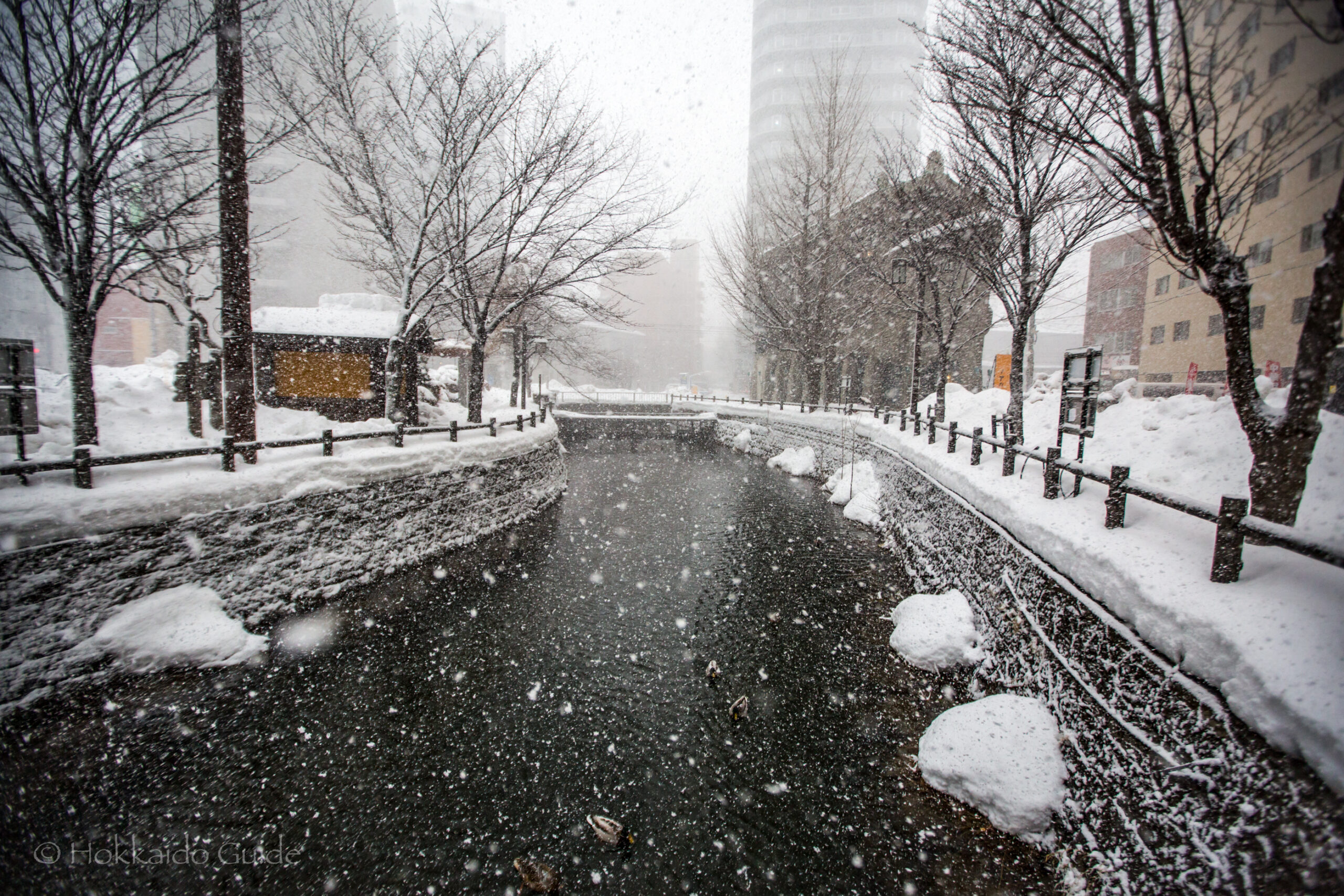
Sosei River
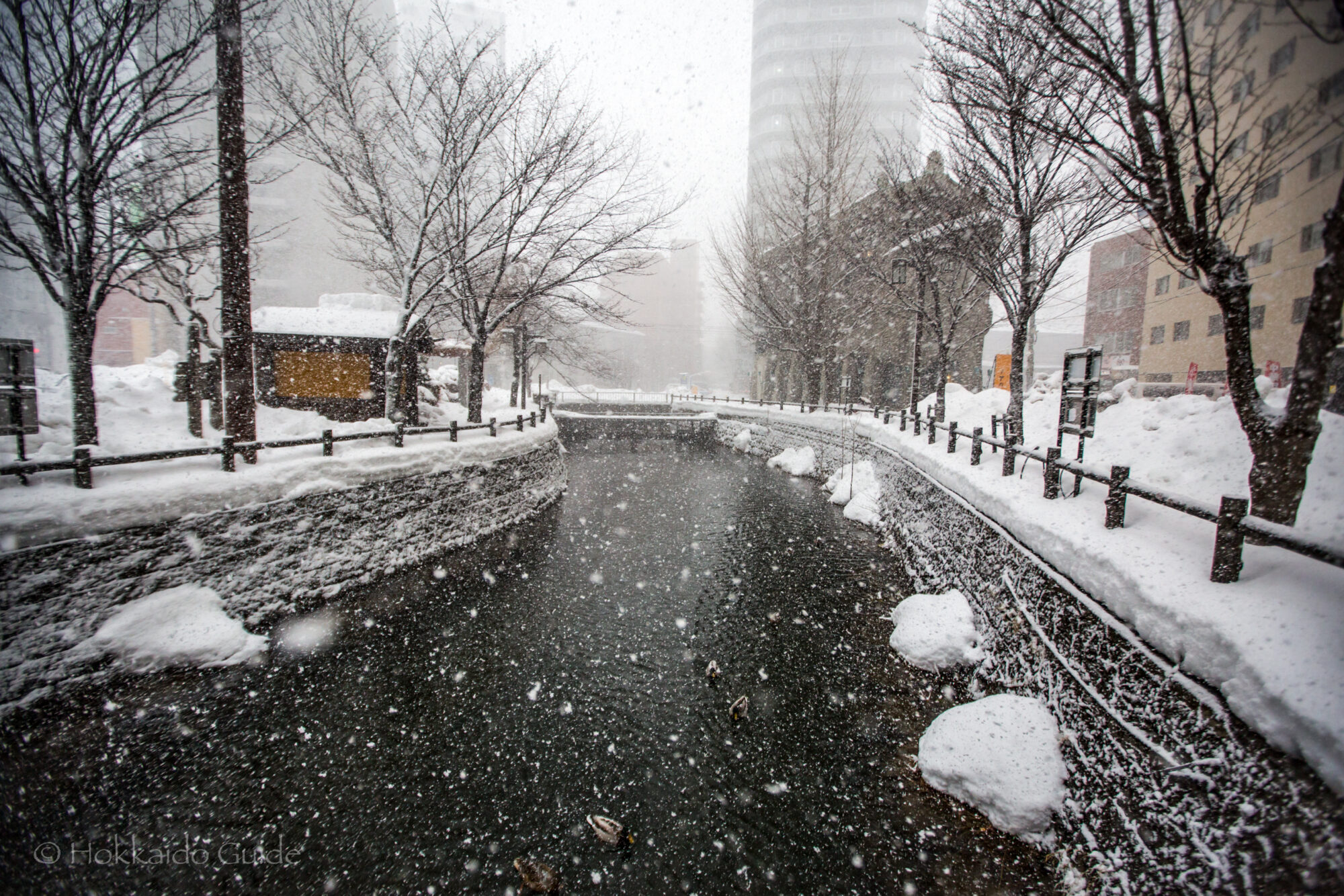
| Admission | Free |
| Opening Hours | Open 24 hours |
| Closed | - |
| Contact | - |
| Notes | Photo spot |
| Location / Getting There | The river runs through the southern end of Susukino, Sapporo, and runs through Soseigawa Park. |
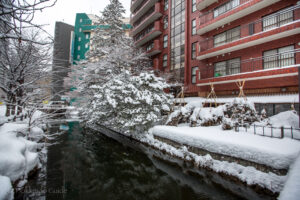 This is a very small river that runs through or past many iconic areas of Sapporo. It is a well recognized river though most people don’t know much about it. It breaks off from Toyohira River and begins its journey north and runs all the way along Nakajima Park. From here it cuts through the northern part of Susukino. There is a bridge over this river at Eki Mae Dori (the main street that runs through Sapporo. It is at this bridge where people can get some nice photos. During the springs cherry blossoms drape over this small river in this area, and in winter it is quite beautiful. It is here too that you can look down and see the many Koi (colorful carp) fish here swimming around. From here the river flows along with some bars and stores along its banks. The river then flows straight for many kilometres. It is the central feature of Soseigawa Park which is named after the river (gawa meaning river in Japanese). The river finally ends up joining Fushiko River and then eventually joins the mighty Ishikari River which ultimately flows to Ishikari Bay.
This is a very small river that runs through or past many iconic areas of Sapporo. It is a well recognized river though most people don’t know much about it. It breaks off from Toyohira River and begins its journey north and runs all the way along Nakajima Park. From here it cuts through the northern part of Susukino. There is a bridge over this river at Eki Mae Dori (the main street that runs through Sapporo. It is at this bridge where people can get some nice photos. During the springs cherry blossoms drape over this small river in this area, and in winter it is quite beautiful. It is here too that you can look down and see the many Koi (colorful carp) fish here swimming around. From here the river flows along with some bars and stores along its banks. The river then flows straight for many kilometres. It is the central feature of Soseigawa Park which is named after the river (gawa meaning river in Japanese). The river finally ends up joining Fushiko River and then eventually joins the mighty Ishikari River which ultimately flows to Ishikari Bay.
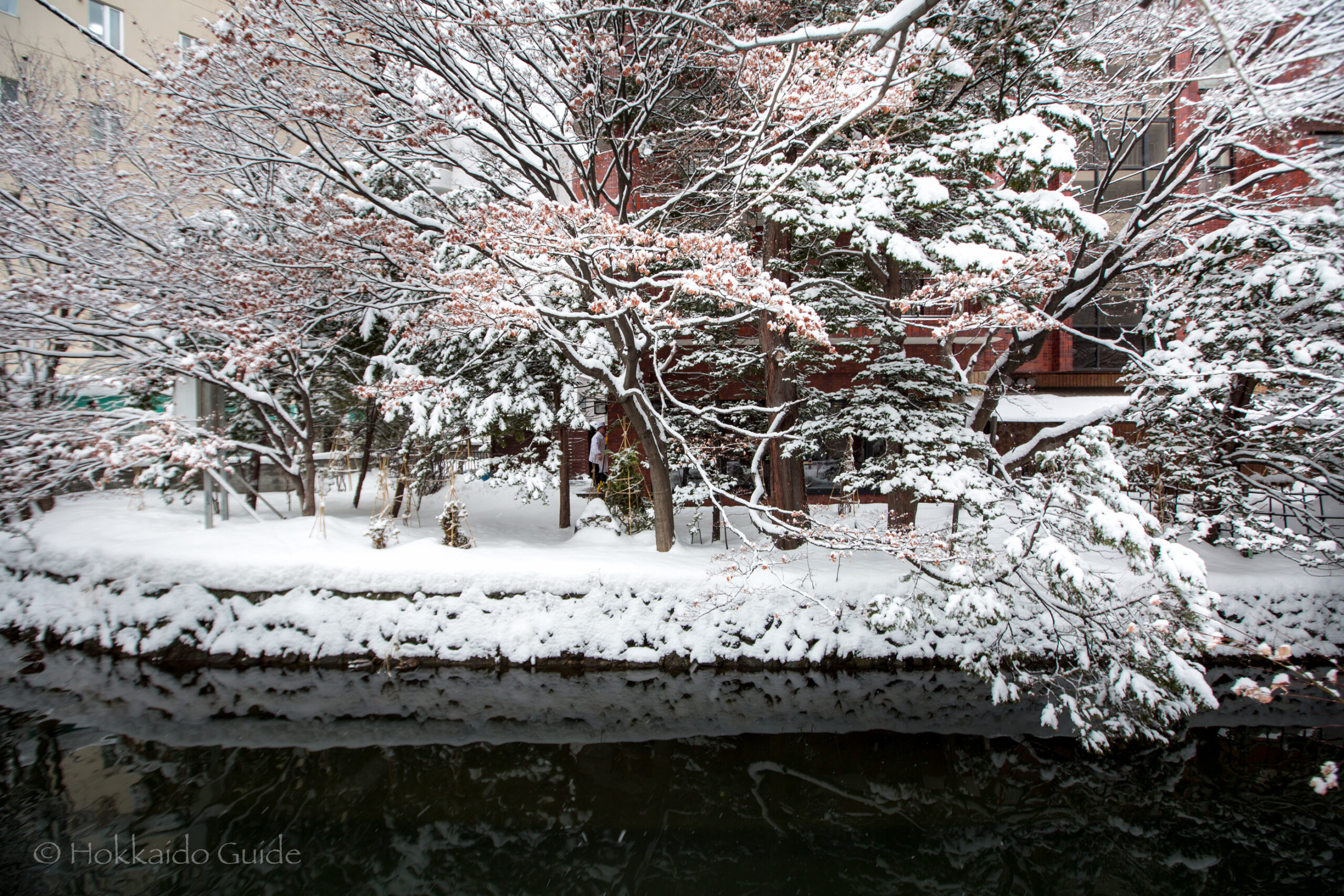
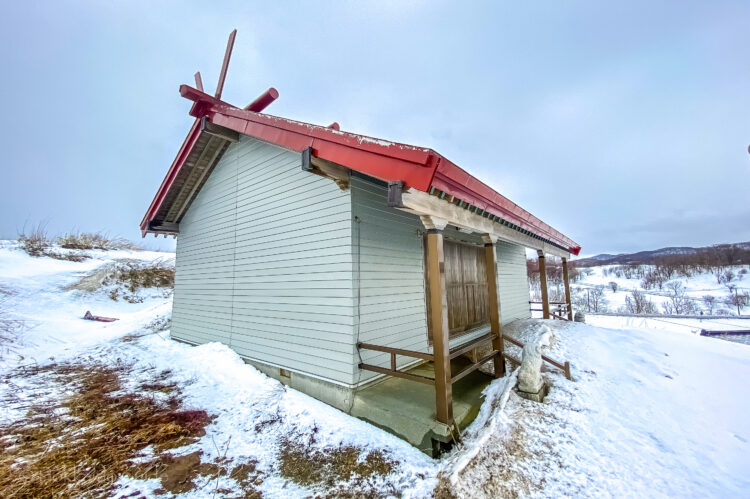
Kotan Hachiman Shrine
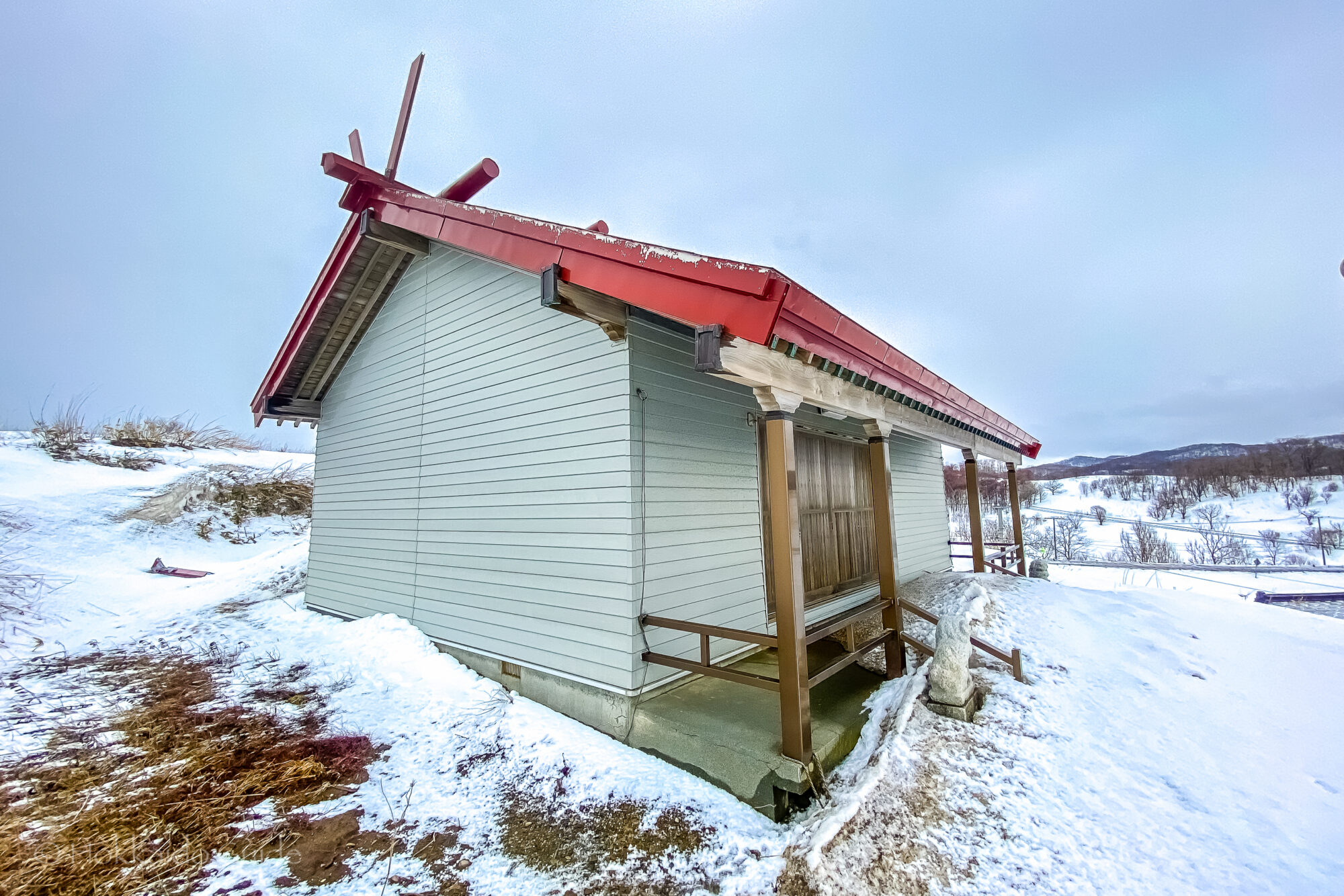
| Established | 1856 |
| Admission | - |
| Opening Hours | Open 24 hours |
| Closed | - |
| Contact | - |
| Notes | Shinto shrine |
| Location / Getting There | This shrine is located along the coast of Ishikari Bay. It's about an hour drive west from central Sapporo. 〒061-3521 Hokkaido, Ishikari, Atsutaku Kotan, 50−3 |
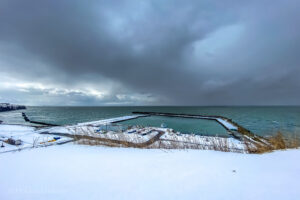 Kotan Hachiman Shrine was founded in 1856 and was officially named a township shrine in 1875. It was listed as a local shrine on the 28th of April 1911. The purpose of the shrine is to follow the great principles of the deity, Hondawake no Mikoto. Hondawake no Mikoto is also more commonly known as the Emporer Ōjin. Emporer Ōjin’s actual reign have been proposed to be as early as 370 to 390 AD, to as late as the early 5th century AD. There is a general consensus that he was “probably real”. His grave is unknown though it is said to be around Osaka. The shrine is on the western coast of Hokkaido and is on a small hilltop offering quite beautiful views over the ocean. There are a flight of steps up to follow under two tori gates. The shrine also has views over the small village of Kotan.
Kotan Hachiman Shrine was founded in 1856 and was officially named a township shrine in 1875. It was listed as a local shrine on the 28th of April 1911. The purpose of the shrine is to follow the great principles of the deity, Hondawake no Mikoto. Hondawake no Mikoto is also more commonly known as the Emporer Ōjin. Emporer Ōjin’s actual reign have been proposed to be as early as 370 to 390 AD, to as late as the early 5th century AD. There is a general consensus that he was “probably real”. His grave is unknown though it is said to be around Osaka. The shrine is on the western coast of Hokkaido and is on a small hilltop offering quite beautiful views over the ocean. There are a flight of steps up to follow under two tori gates. The shrine also has views over the small village of Kotan.
This is a seafaring village and if you happen to see the warehouse of the locals sorting through their catch, you can pick up some fish for a very good price! About the shrine, the number of parishioner households total a hundred households, and the number of worshippers counts to a hundred. The annual shrine festival is on June 25th. It is a 3 minute walk from the Sapporo Chuo Bus Kotan.

Otaru Canal Museum & Information Center

| Admission | ¥300 |
| Opening Hours | 9:30 - 17:00 Information center closes at 18:00 |
| Closed | - |
| Contact | 013-4221-258 |
| Notes | Museum, wheelchair access, lockers available, sled activities (winter), paid parking close by |
| Location / Getting There | The museum is located right by Otaru Canal. It is a 10 minute walk south from Otaru train station. From the exit, walk down the main road to the canal. The museum is on the left, along route 454 2 Chome-1-20 Ironai, Otaru, Hokkaido 047-0031 |
 Otaru City General Museum Canal Museum has an extensive collection that introduces the history of Otaru City including information on the natural environment. The exhibition includes 20,000 objects and materials in its collection. The museum is located by Otaru Canal and can be found in the ‘former Otaru warehouse’. This beautiful building was constructed in 1887. The museum itself is a historical icon. In 2007, the museum was opened as well as the Otaru Information Center which has direct access to the museum.
Otaru City General Museum Canal Museum has an extensive collection that introduces the history of Otaru City including information on the natural environment. The exhibition includes 20,000 objects and materials in its collection. The museum is located by Otaru Canal and can be found in the ‘former Otaru warehouse’. This beautiful building was constructed in 1887. The museum itself is a historical icon. In 2007, the museum was opened as well as the Otaru Information Center which has direct access to the museum.
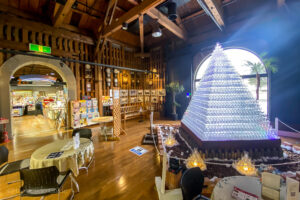 The first exhibition room looks at the history of Otaru from its origins connected with the Ainu. There are materials related to the Ainu as well as the herring fishing industry. The latter part of the exhibition looks at a cityscape of Otaru during the Taisho era (1912 – 1926). There are some hands on exhibits here. The second exhibition room looks at the extensive flora and fauna of the Otaru area. These fascinating exhibits include a skeleton of a giant sea lion. Apart from the museum, there is a nice small coffee shop located in the information center. The information center is recognizable by its champagne glass pyramid. This room as tonnes of information about Otaru. Very useful for tourists.
The first exhibition room looks at the history of Otaru from its origins connected with the Ainu. There are materials related to the Ainu as well as the herring fishing industry. The latter part of the exhibition looks at a cityscape of Otaru during the Taisho era (1912 – 1926). There are some hands on exhibits here. The second exhibition room looks at the extensive flora and fauna of the Otaru area. These fascinating exhibits include a skeleton of a giant sea lion. Apart from the museum, there is a nice small coffee shop located in the information center. The information center is recognizable by its champagne glass pyramid. This room as tonnes of information about Otaru. Very useful for tourists.
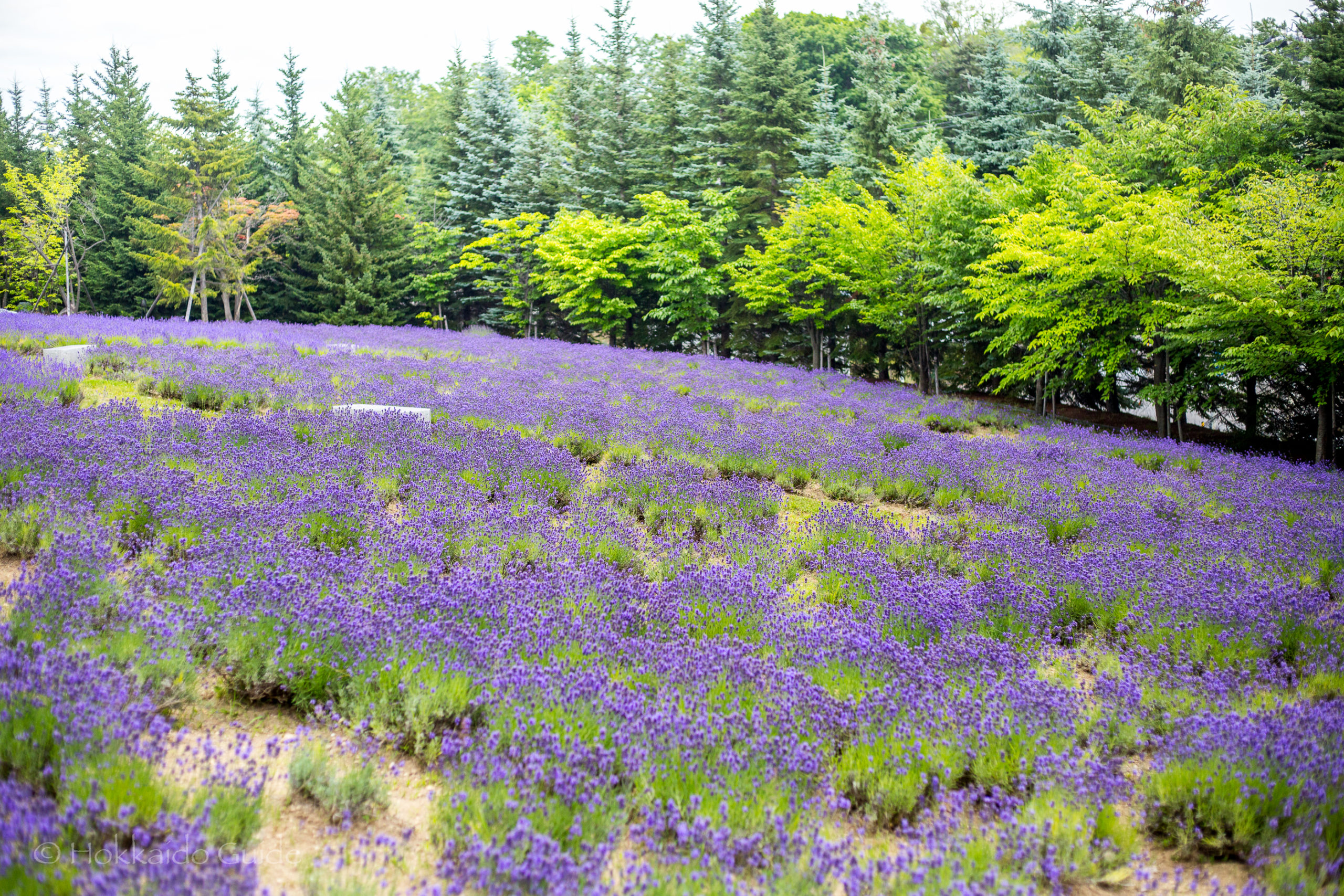
Tokai Lavender Fields
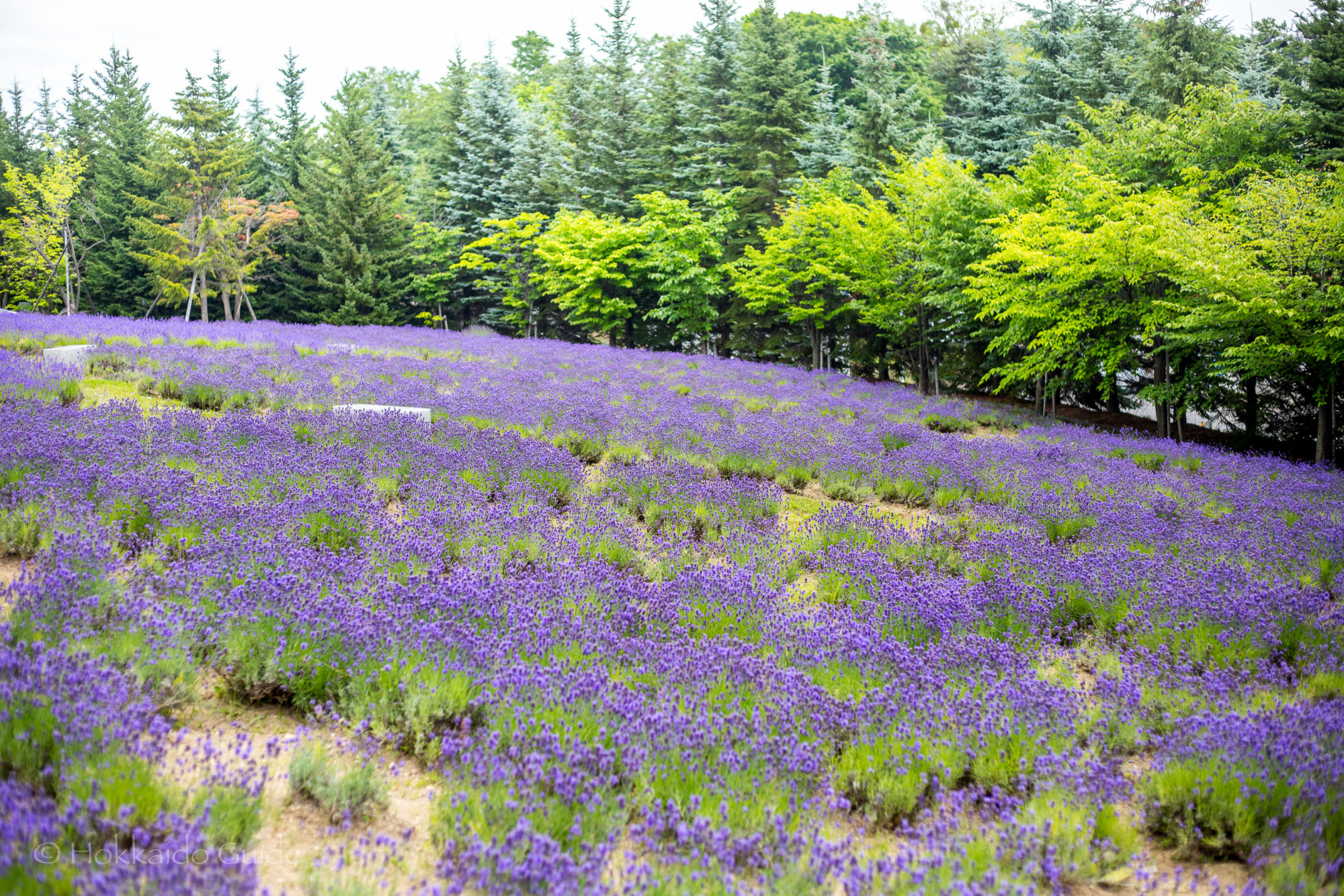
| Admission | Free |
| Opening Hours | - |
| Viewing times | July & August |
| Closed | - |
| Contact | - |
| Notes | Car needed, small parking area, festival in mid July |
| Location / Getting There | Located at Tokai School campus. It's a 30 minute drive from central Sapporo. Head south along Ishiyama Road and turn right onto route 82. Public transport, take the subway to Makomanai Station (Nanboku line). From here take the bus 24 to Tokai Highschool. 1 Chome-1-1 Minamisawa 5 Jo, Minami Ward, Sapporo, Hokkaido 005-8602 |
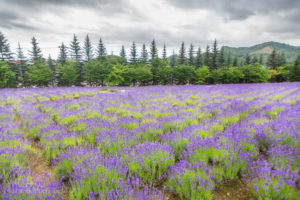 On the Tokai Sapporo School campus the grounds really comes alive with lavender. It is said that the south district of Sapporo, where the campus is located, is known as the birthplace of lavender cultivation in Japan. The lavender field here has been planned since 2002 and now it has 3,600 lavender plants that create a beautiful scene from late June to mid August. There is a festival held here annually in mid July. This includes a “lavender concert” which is performed by the brass band of the school here (noted as the best school brass band in Japan).
On the Tokai Sapporo School campus the grounds really comes alive with lavender. It is said that the south district of Sapporo, where the campus is located, is known as the birthplace of lavender cultivation in Japan. The lavender field here has been planned since 2002 and now it has 3,600 lavender plants that create a beautiful scene from late June to mid August. There is a festival held here annually in mid July. This includes a “lavender concert” which is performed by the brass band of the school here (noted as the best school brass band in Japan).
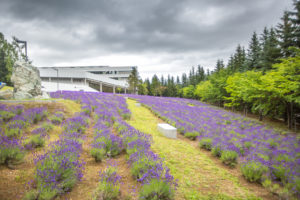 During the festival a ‘Yosakoi Soran’ dance is also performed by the students. The festival has become an annual event not only for the students but also for the whole community. The fields are accessed easier by car. There is a large parking lot right near the campus grounds and this parking is free. For those taking the bus, the bus stop is directly in front of the school. These lavender fields are pleasant to walk around. They have a few benches on which to rest. The backdrop of the new modern school is also nice. These small lavender fields are not well known so for those traveling you can experience a very local and non touristy sightseeing spot!
During the festival a ‘Yosakoi Soran’ dance is also performed by the students. The festival has become an annual event not only for the students but also for the whole community. The fields are accessed easier by car. There is a large parking lot right near the campus grounds and this parking is free. For those taking the bus, the bus stop is directly in front of the school. These lavender fields are pleasant to walk around. They have a few benches on which to rest. The backdrop of the new modern school is also nice. These small lavender fields are not well known so for those traveling you can experience a very local and non touristy sightseeing spot!
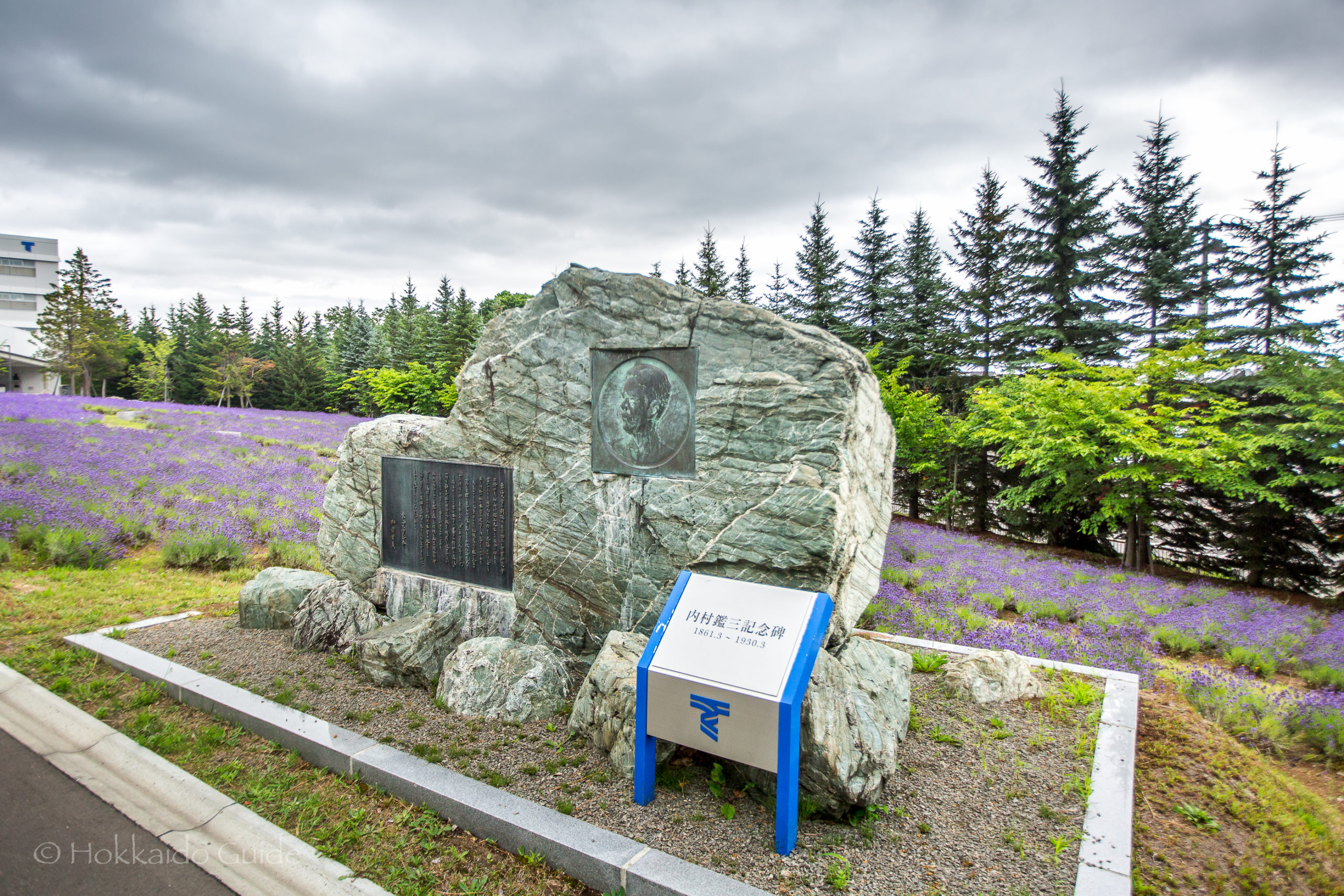
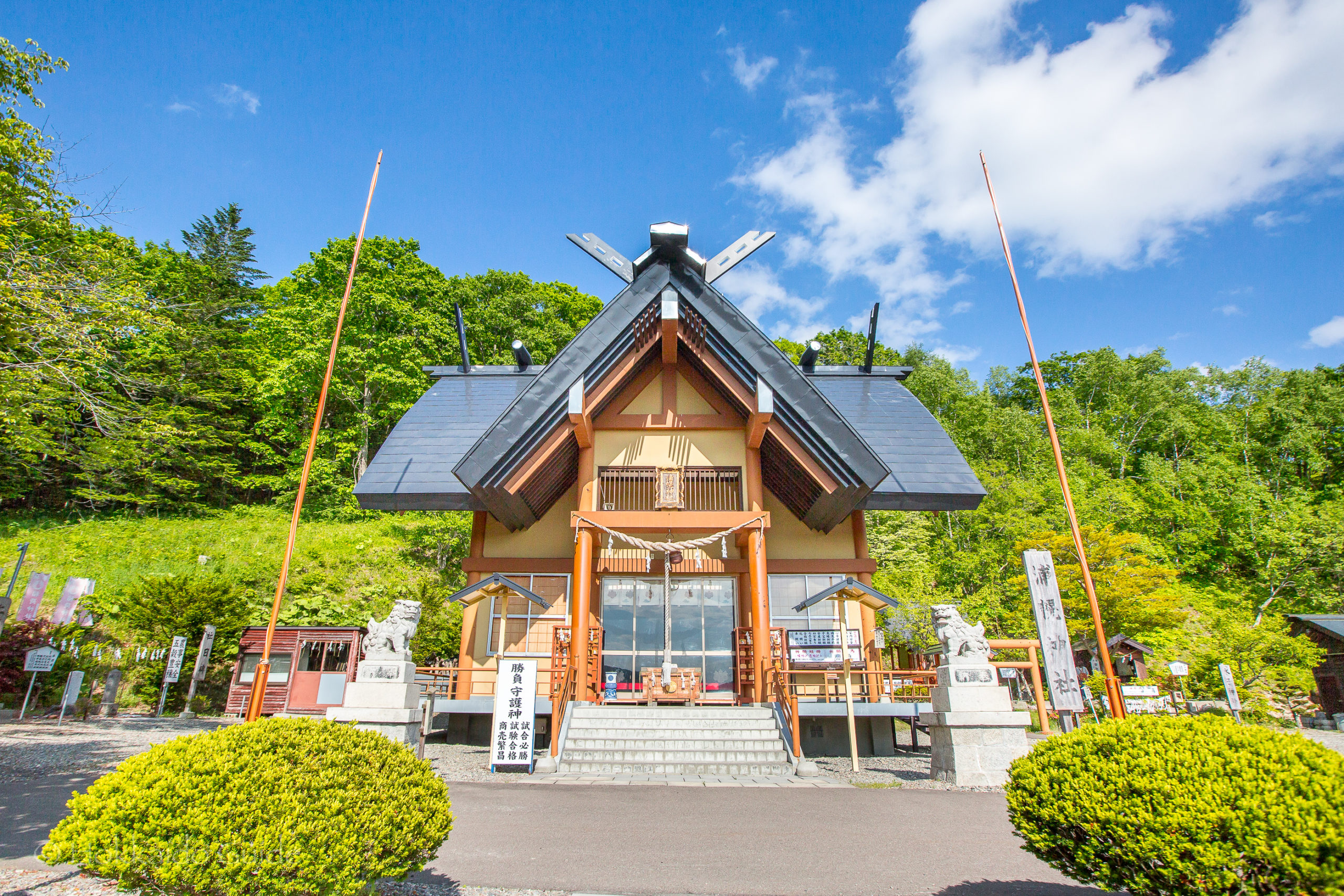
Urahoro Shrine

| Admission | - |
| Opening Hours | 8:00 - 20:00 |
| Closed | - |
| Contact | 011-5576-2448 |
| Notes | Shinto shrine, parking available |
| Location / Getting There | The shrine is located along route 38. It is overlooking the town of Urahoro. It is a 16 minute walk from Urahoro train station. 18-1 Higashiyamacho, Urahoro, Tokachi District, Hokkaido 089-5612 |
 During the Meiji Era, as the town of Urahoro (on the south east coast of Hokkaido) was being developed, the pioneers called for the construction of a shrine to serve as a spiritual centre. On August 15, 1896, a small shrine was erected, enshrining Amaterasu (goddess of the sun and the universe). In the latter half of the Meiji period, the small shrine was relocated to a location near the entrance to Forest Park in Urahoro. In 1923, the main shrine was built overlooking the town and stands as it is today. In 1996, the shrine building was renovated, and in August, the 100th anniversary of the founding of the shrine was celebrated.
During the Meiji Era, as the town of Urahoro (on the south east coast of Hokkaido) was being developed, the pioneers called for the construction of a shrine to serve as a spiritual centre. On August 15, 1896, a small shrine was erected, enshrining Amaterasu (goddess of the sun and the universe). In the latter half of the Meiji period, the small shrine was relocated to a location near the entrance to Forest Park in Urahoro. In 1923, the main shrine was built overlooking the town and stands as it is today. In 1996, the shrine building was renovated, and in August, the 100th anniversary of the founding of the shrine was celebrated.
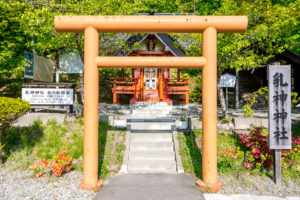 The grounds are also home to other points of interest. Nearby the main shrine, there is Nyukami Shrine. This shrine houses a sacred object. In the forest behind the shrine there was an old oak tree with two bumps that looked like breasts. In the Taisho era (1912-1926), an old woman named Yoshida prayed to this tree and the worship of the ‘milk goddess’ originated. The tree was destroyed by a typhoon in 1962 but the two humps of the tree were preserved and place in Nyukami Shrine. In 2015, a “Business Card Dedication Station” was built in the area, so that riders can pray for traffic safety. Next to Nyukami Shrine is Mizuko Shrine. The deities enshrined here are to comfort and protect the souls of water children.
The grounds are also home to other points of interest. Nearby the main shrine, there is Nyukami Shrine. This shrine houses a sacred object. In the forest behind the shrine there was an old oak tree with two bumps that looked like breasts. In the Taisho era (1912-1926), an old woman named Yoshida prayed to this tree and the worship of the ‘milk goddess’ originated. The tree was destroyed by a typhoon in 1962 but the two humps of the tree were preserved and place in Nyukami Shrine. In 2015, a “Business Card Dedication Station” was built in the area, so that riders can pray for traffic safety. Next to Nyukami Shrine is Mizuko Shrine. The deities enshrined here are to comfort and protect the souls of water children.
| 1st and 15th of every month | Prayers for the safety of the Imperial Family, peace for the nation, and peace for the Urahoro worshippers. |
| January 1 | New Years Day. Prayer for the safety of the Imperial Family, peace for the nation, and a good harvest for the year. |
| January 15 | The burning of old Shinto prayer cards and charms. Prayer for good health. On the day before the first day of spring, there is the purification the evil spirits. The doors of the main shrine are opened to offer thanks to the Milk God and prayer for spring. |
| June 30 | Grand purification ceremony and Nagoshi-no-harai (summer purification). A Shinto ritual to purge the sins and impurities of the past six months and pray for good health. |
| August | On the evening before the last Sunday of the month, There is the summer portable shrine procession festival (Mikoshi & Yoimiya Festival). The portable shrine is purified the night before the main festival, and the gods are notified that the big festival will be held tomorrow. On the last Sunday of the month, the portable shrine will be paraded through the town to pray for the safety of each family and the prosperity of each company. |
| September 20 | Autumn Grand Festival Prayers and dedication events are held for the Ujigami (local deity), which has been handed down from the pioneers. The doors of the main shrine are opened to offer thanks to the Goddess of Milk and pray for the autumn. The god of the land and the god of agriculture are invited to give thanks for the year's harvest and to pray for the safety. Prayers are offered to the gods for the healthy growth of children who are three, five, and seven years old. Prayers are offered for the harvest and labor to the gods of the 24 shrines in Urahoro Town. |
| December 31 | New Year's Eve Purification Ceremony and Nightfall Festival is held to purify the sins and impurities of the year from the body and soul using dolls, and to pray for good health in the New Year. |
| December 30 to January 5 | The shrine grounds are illuminated. |


